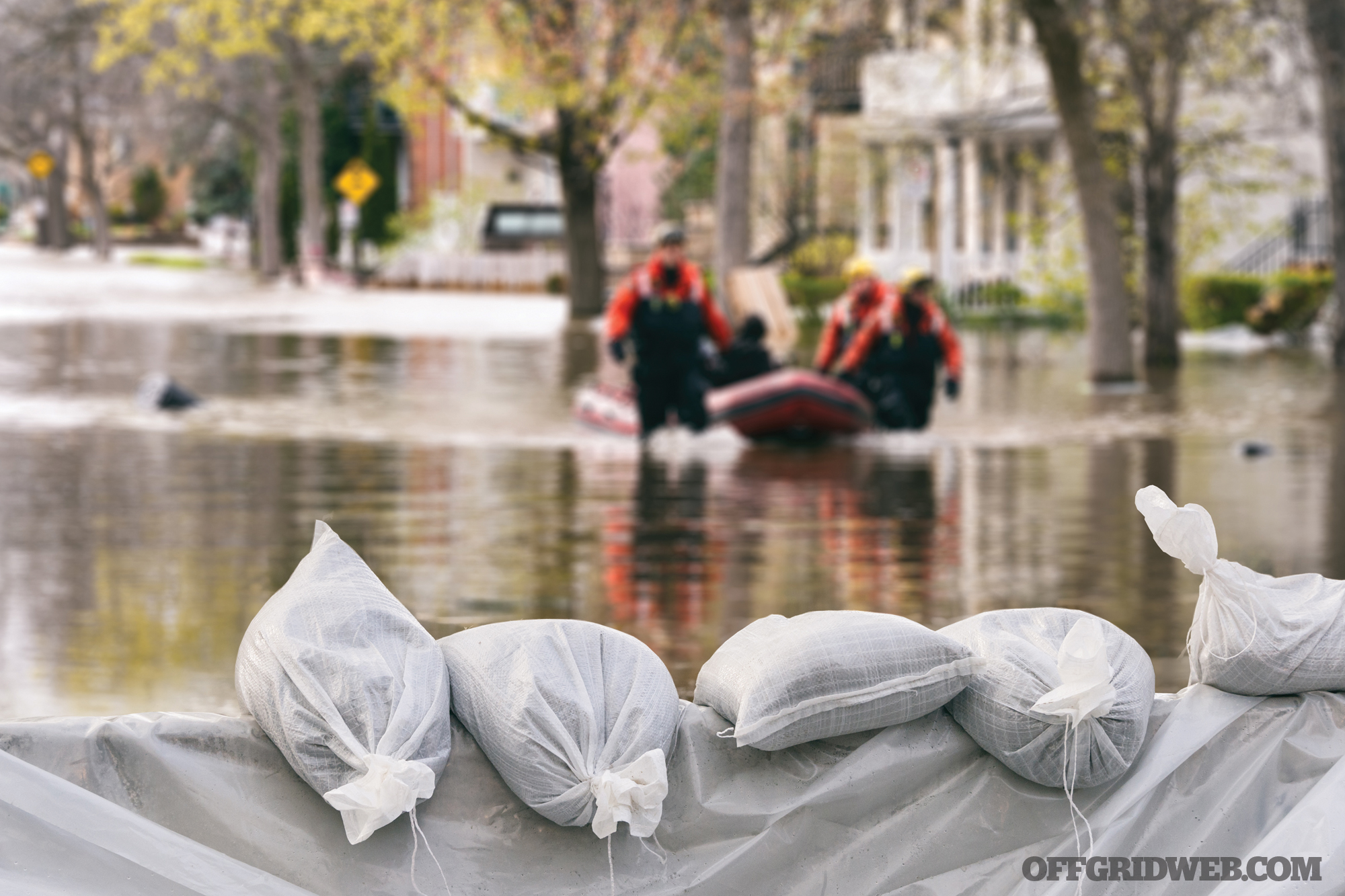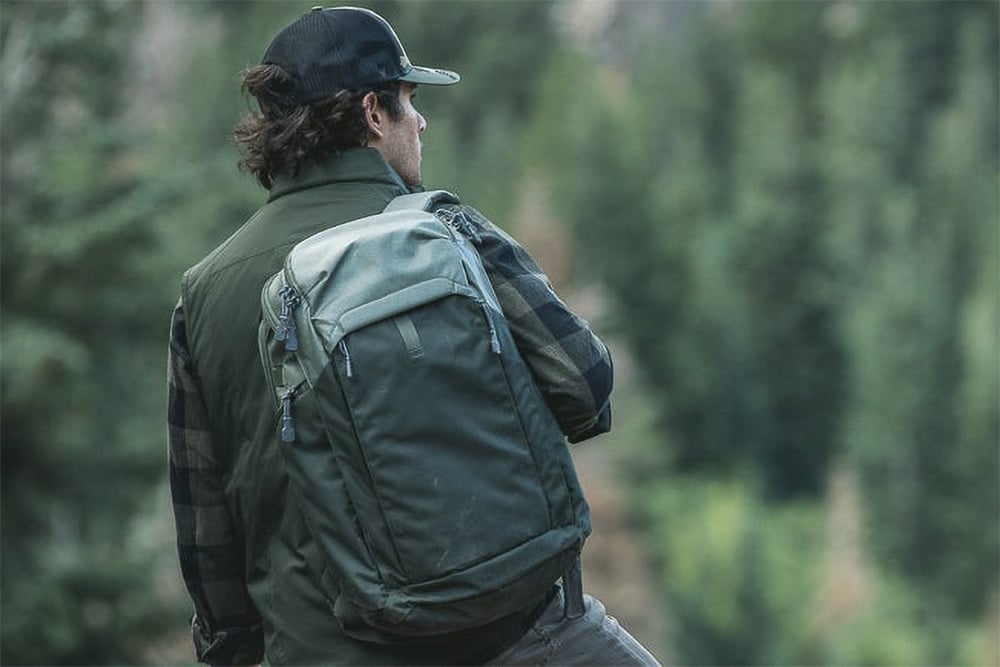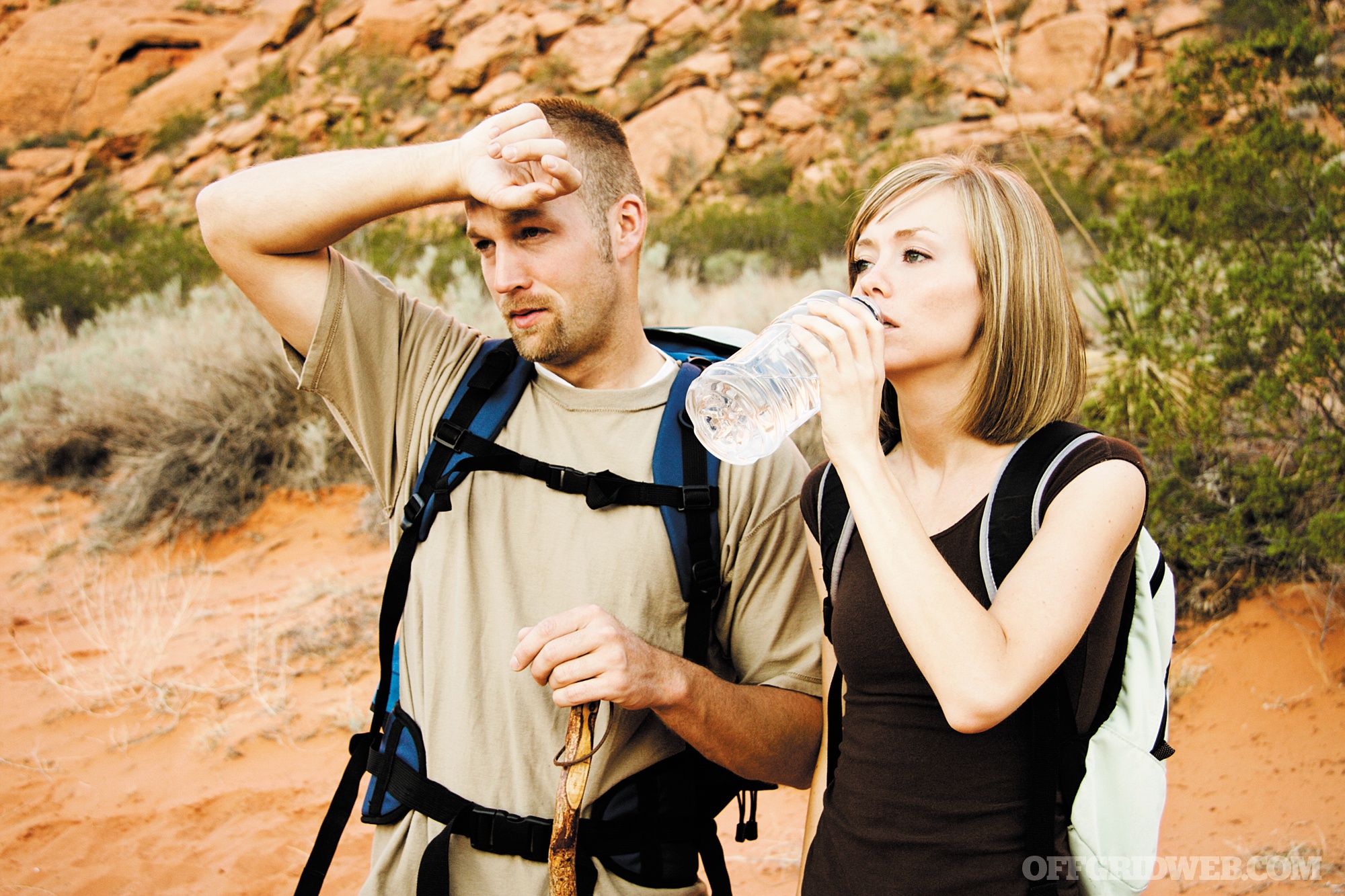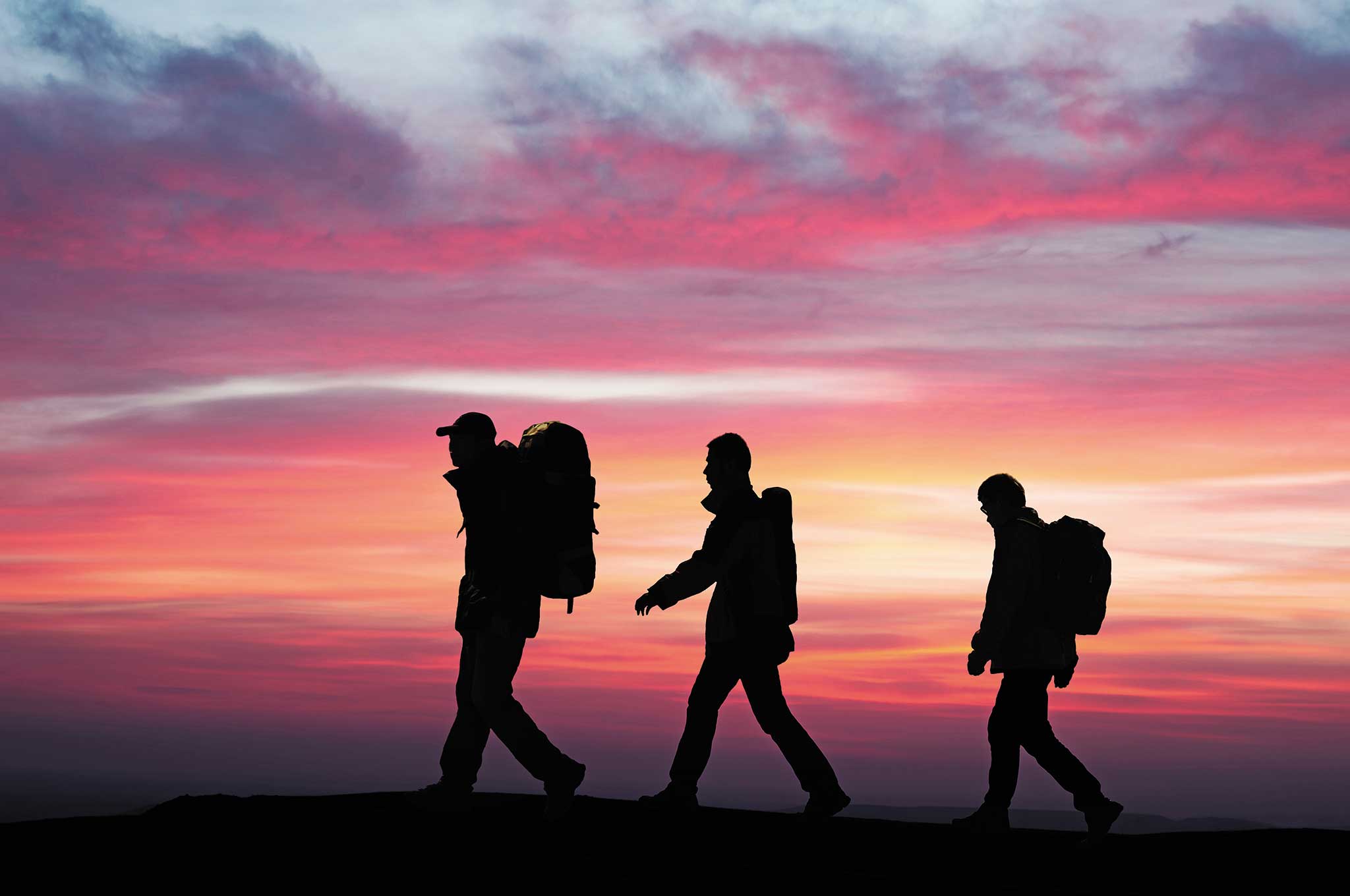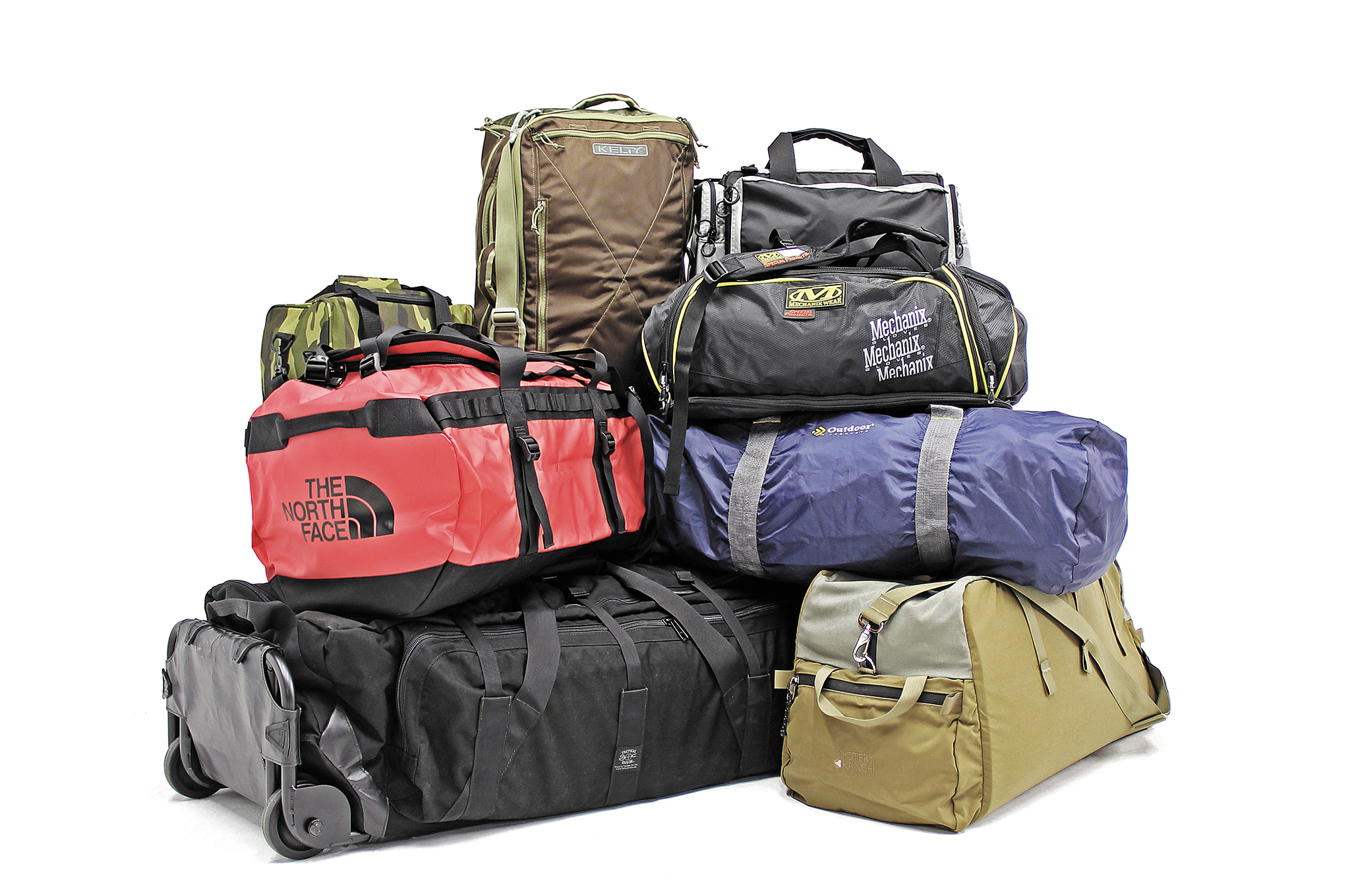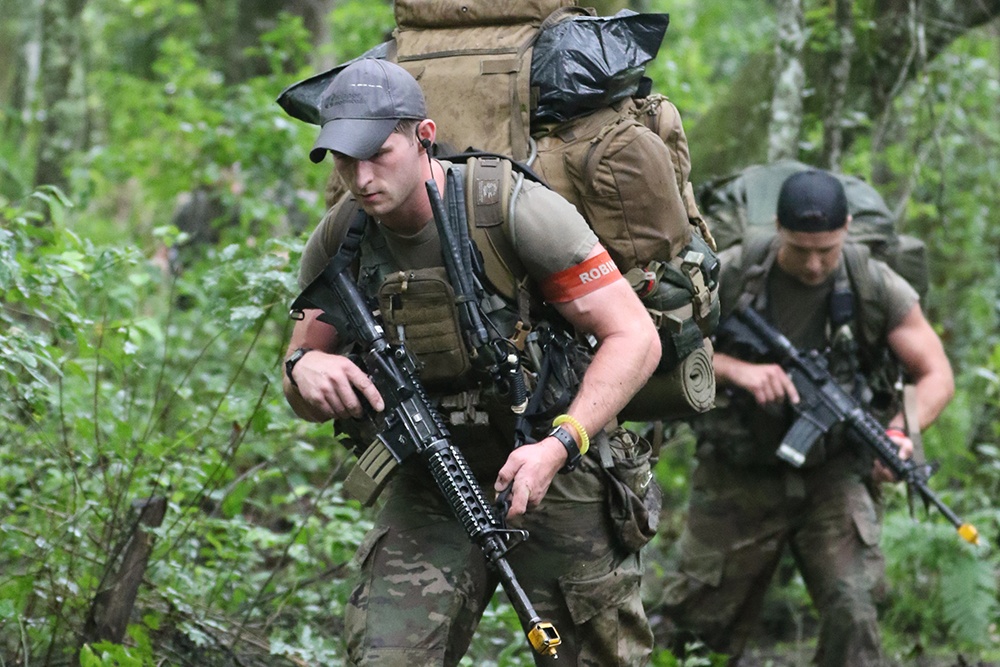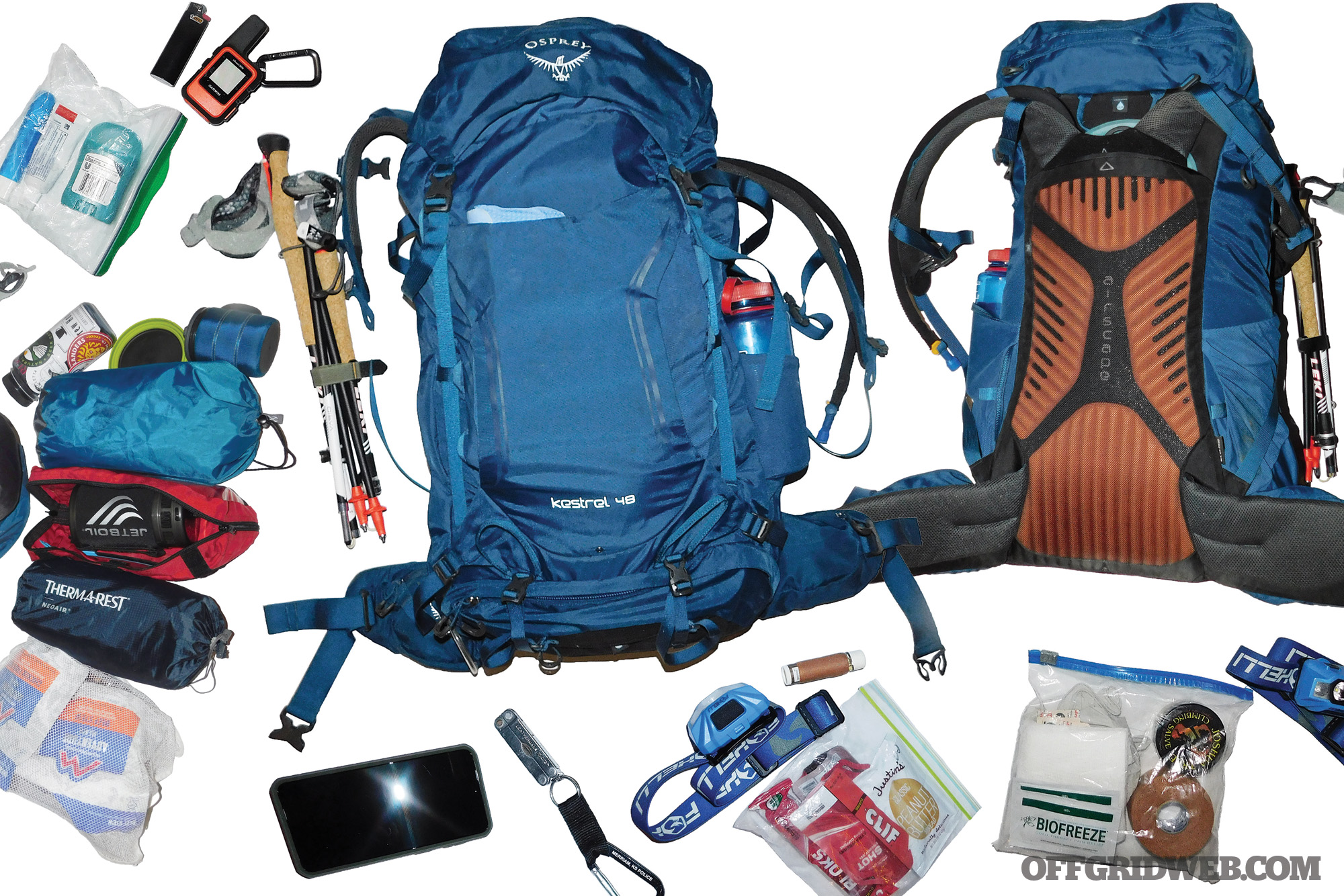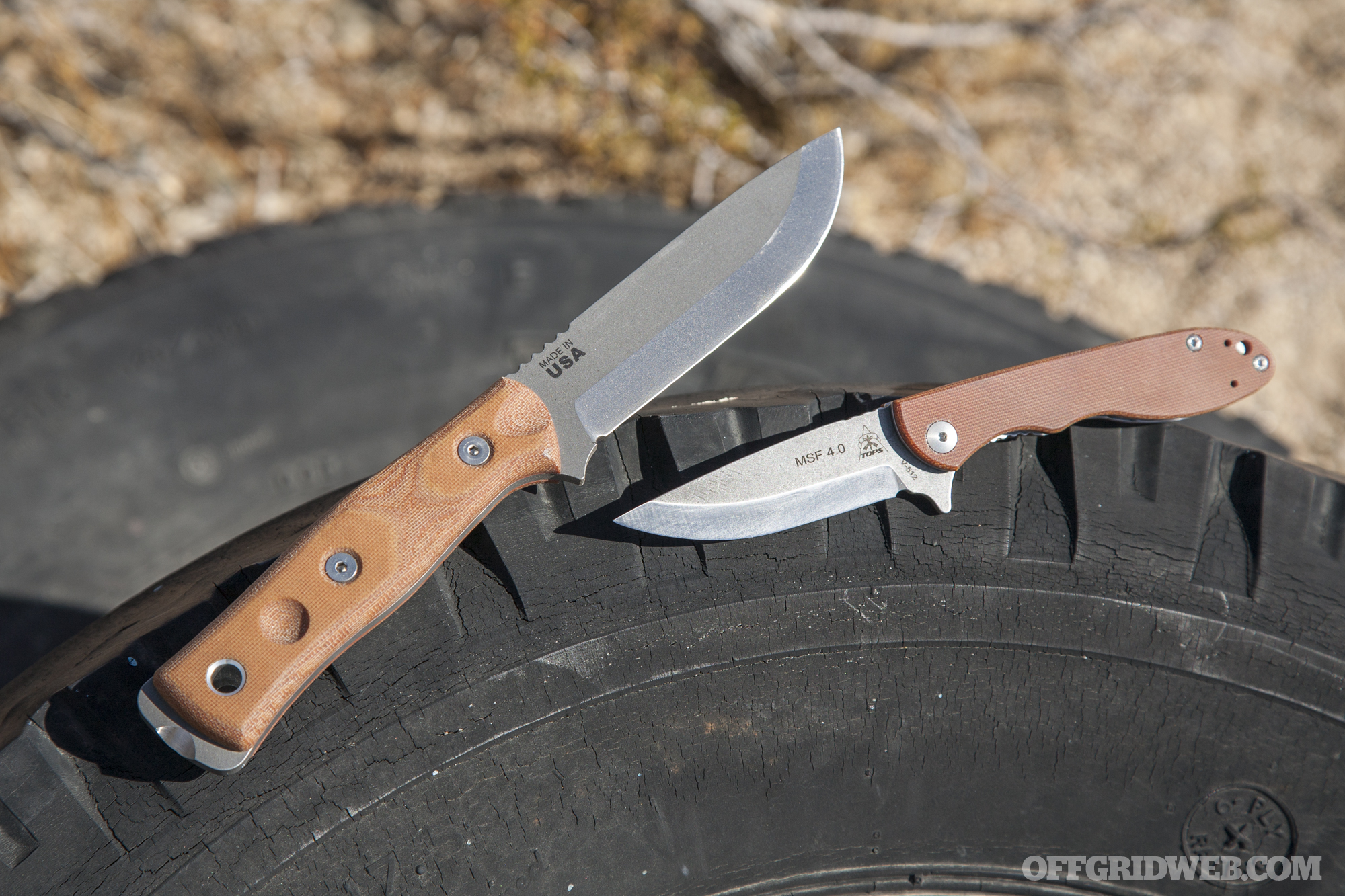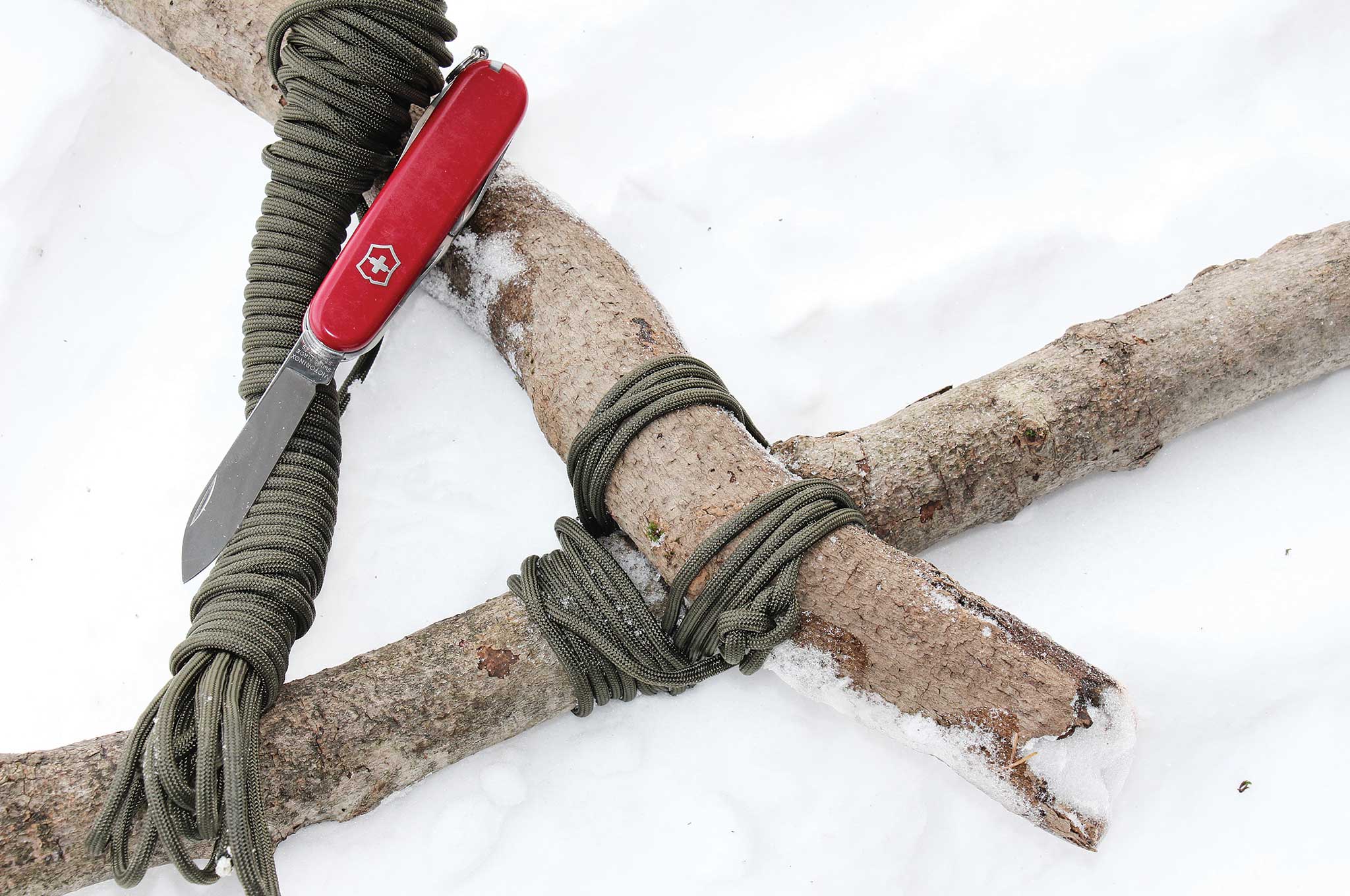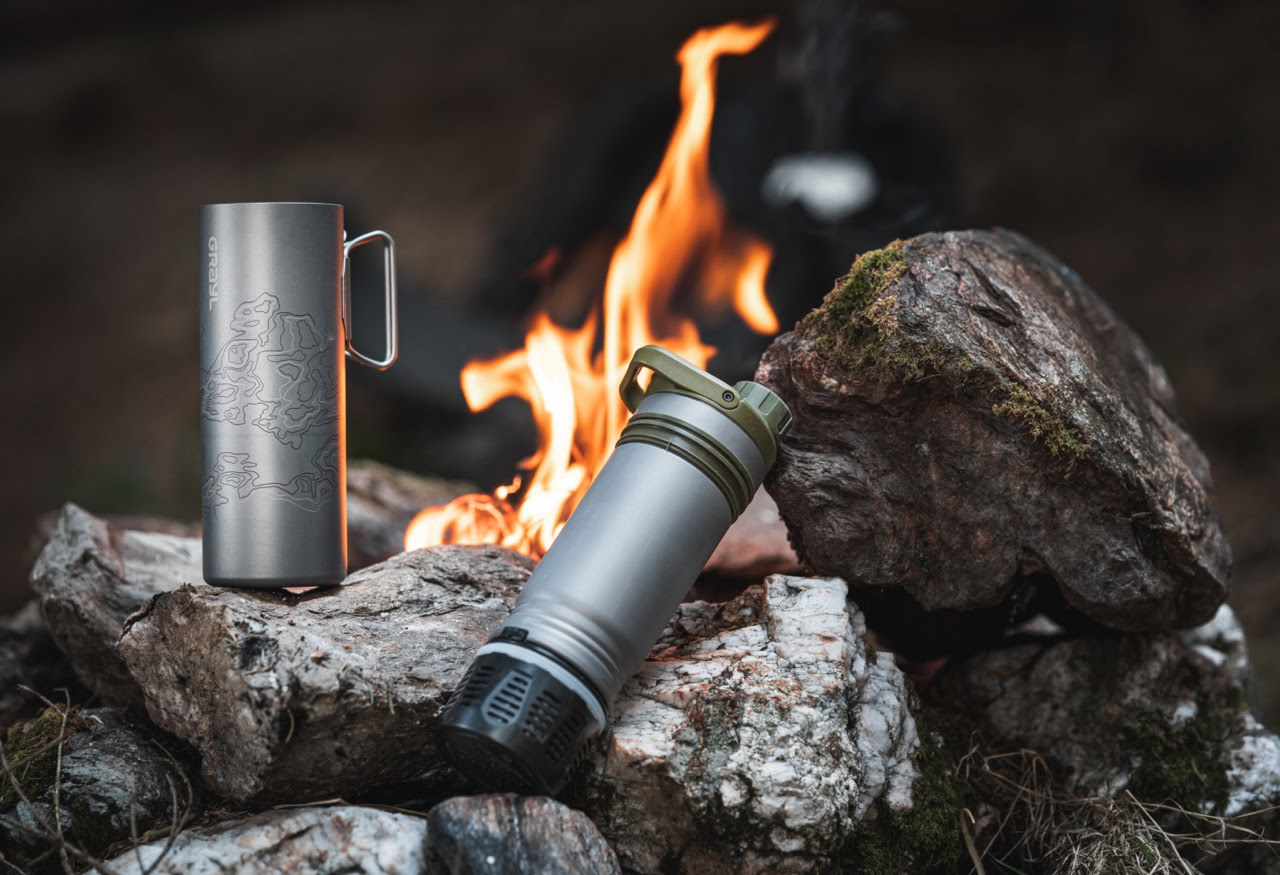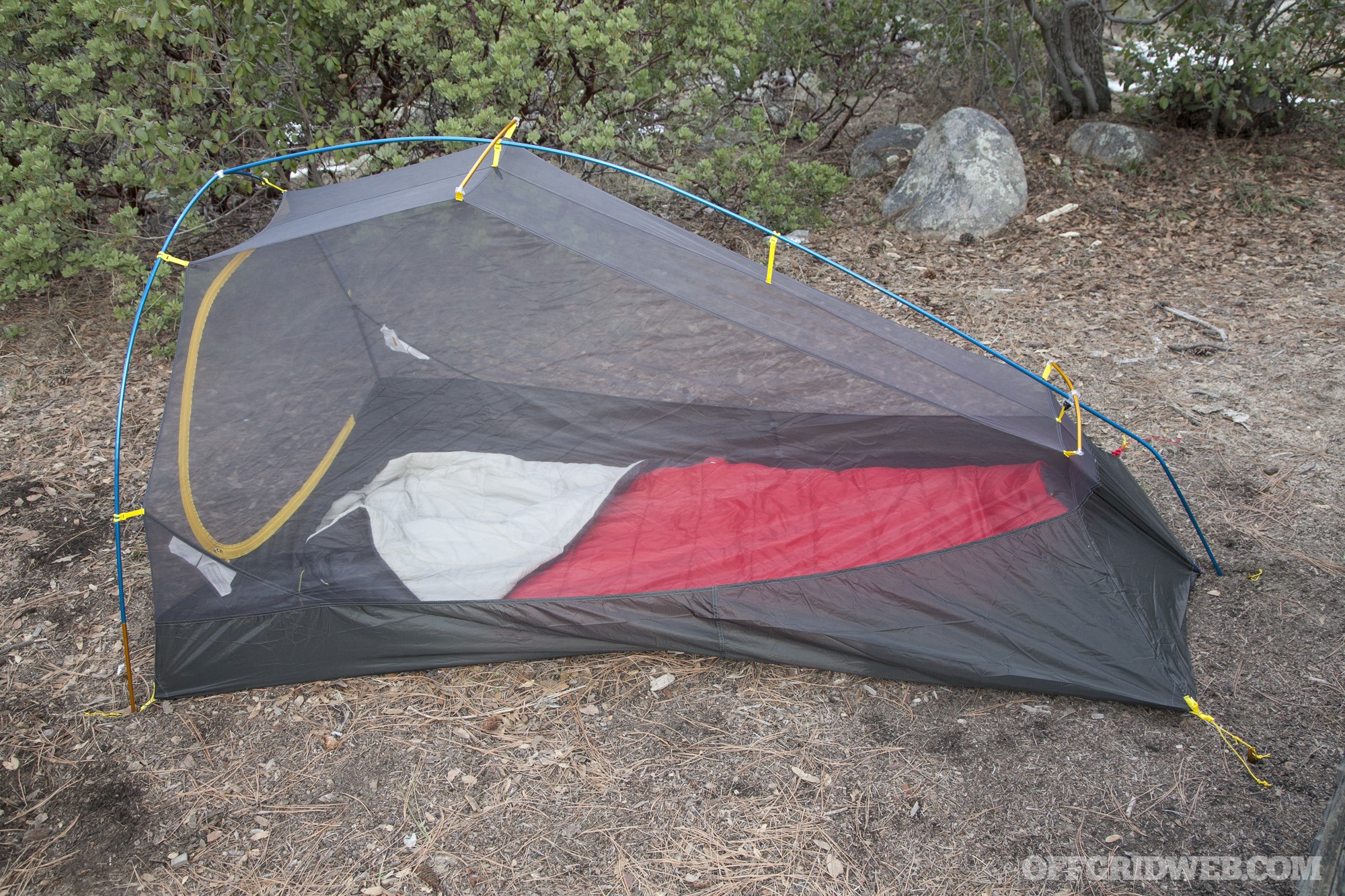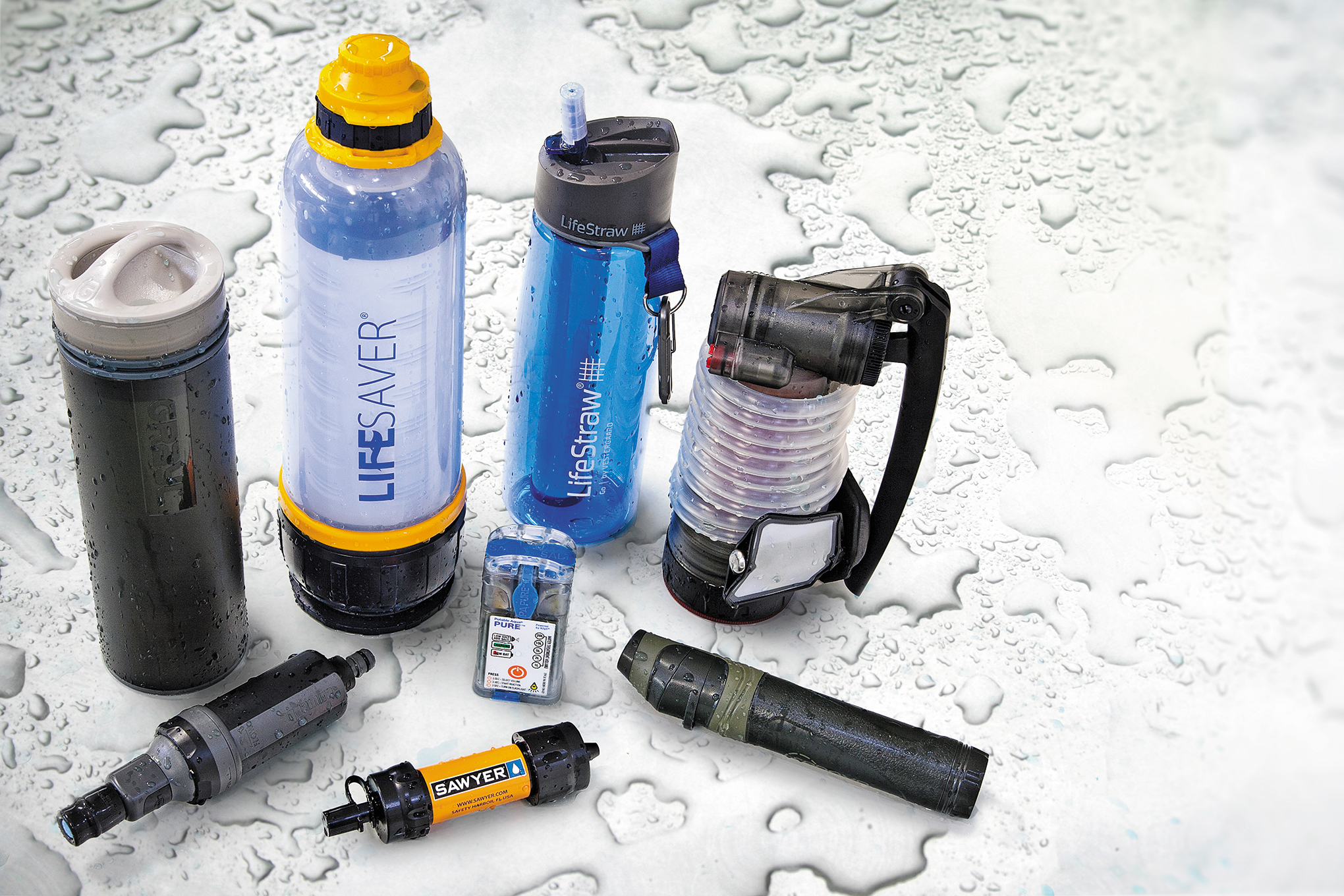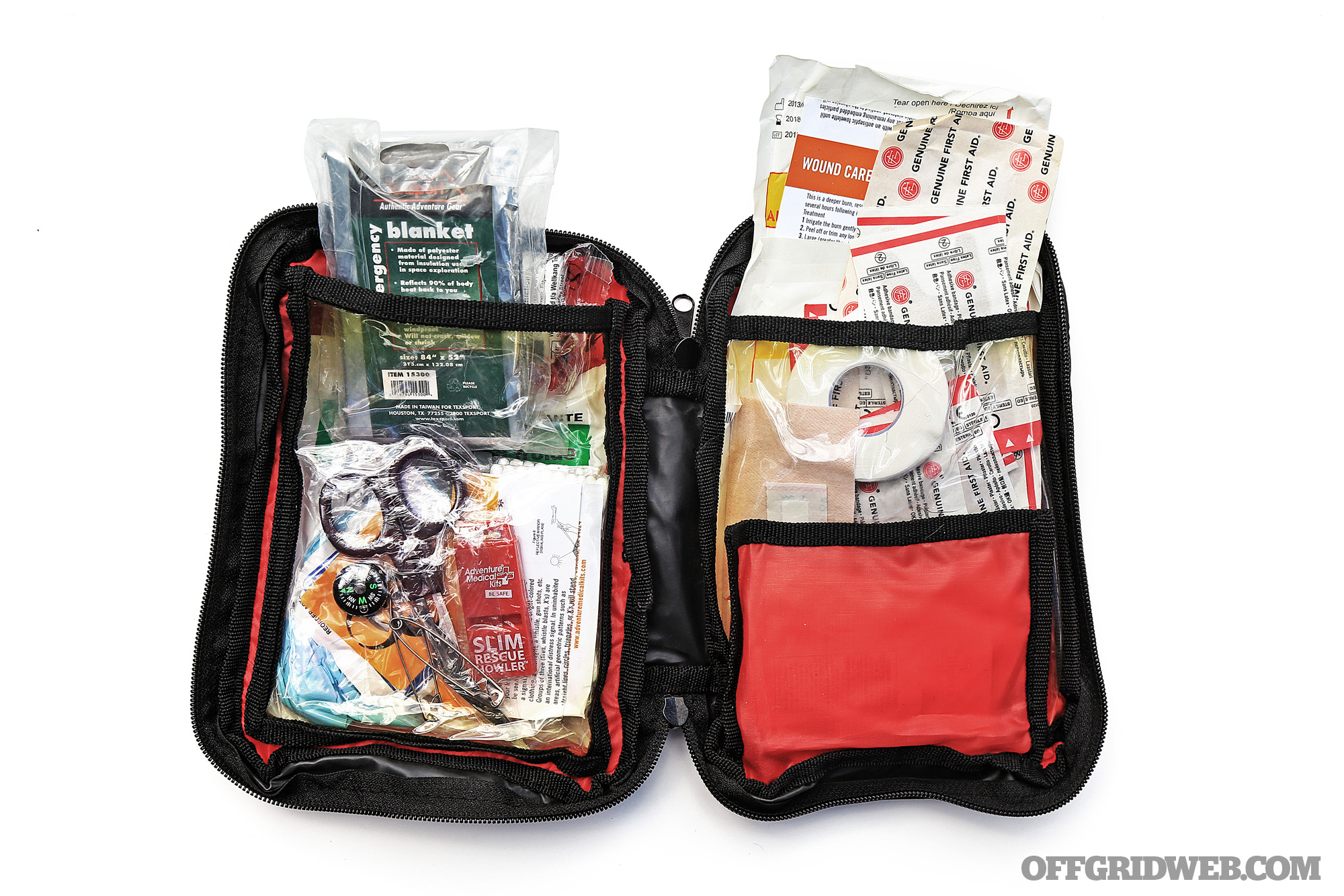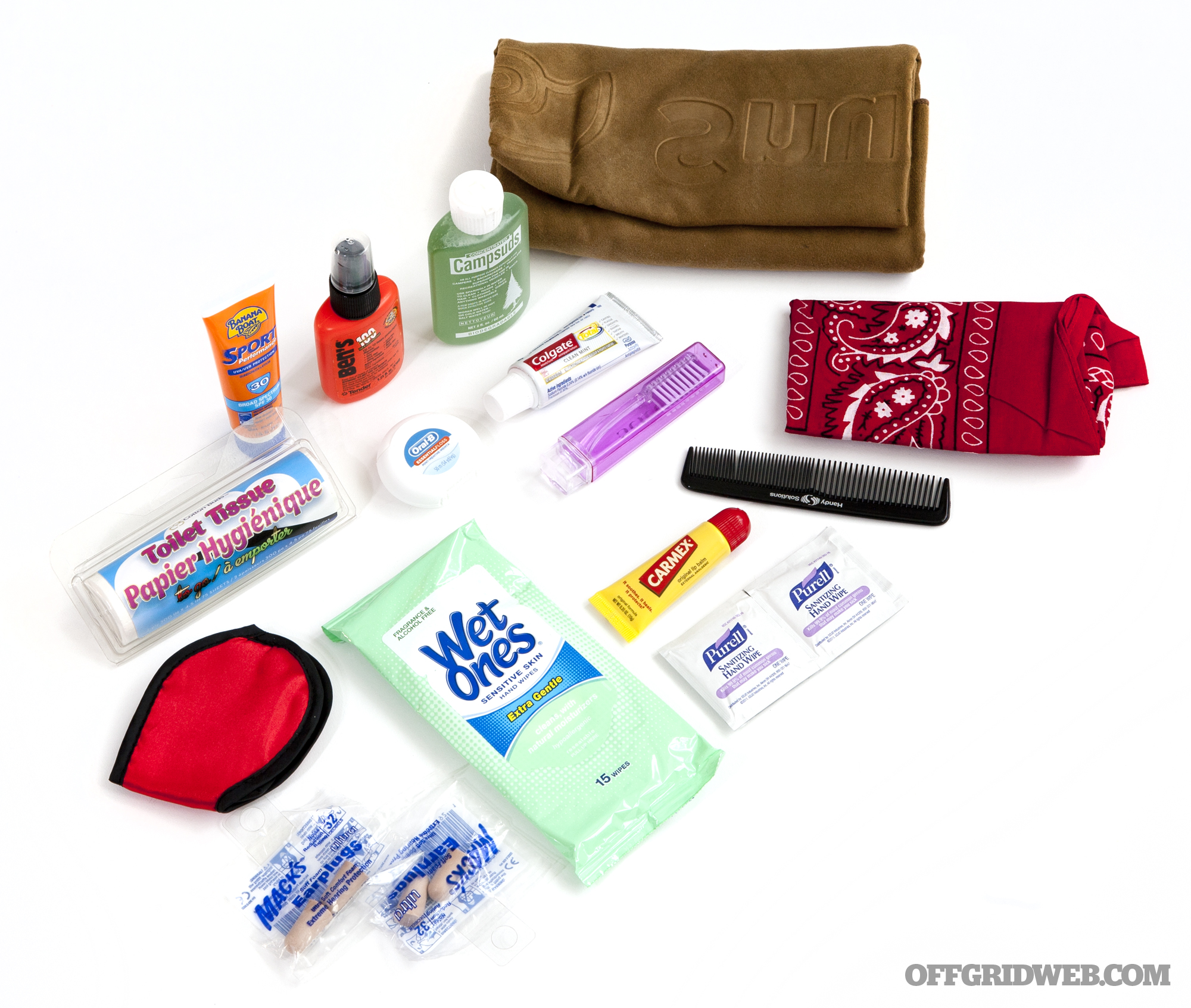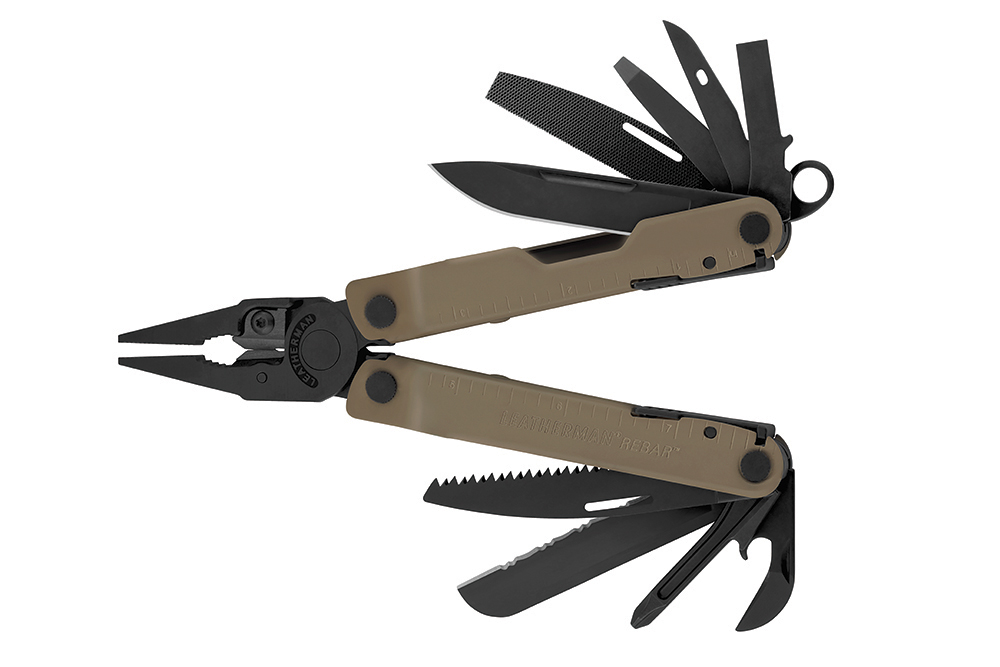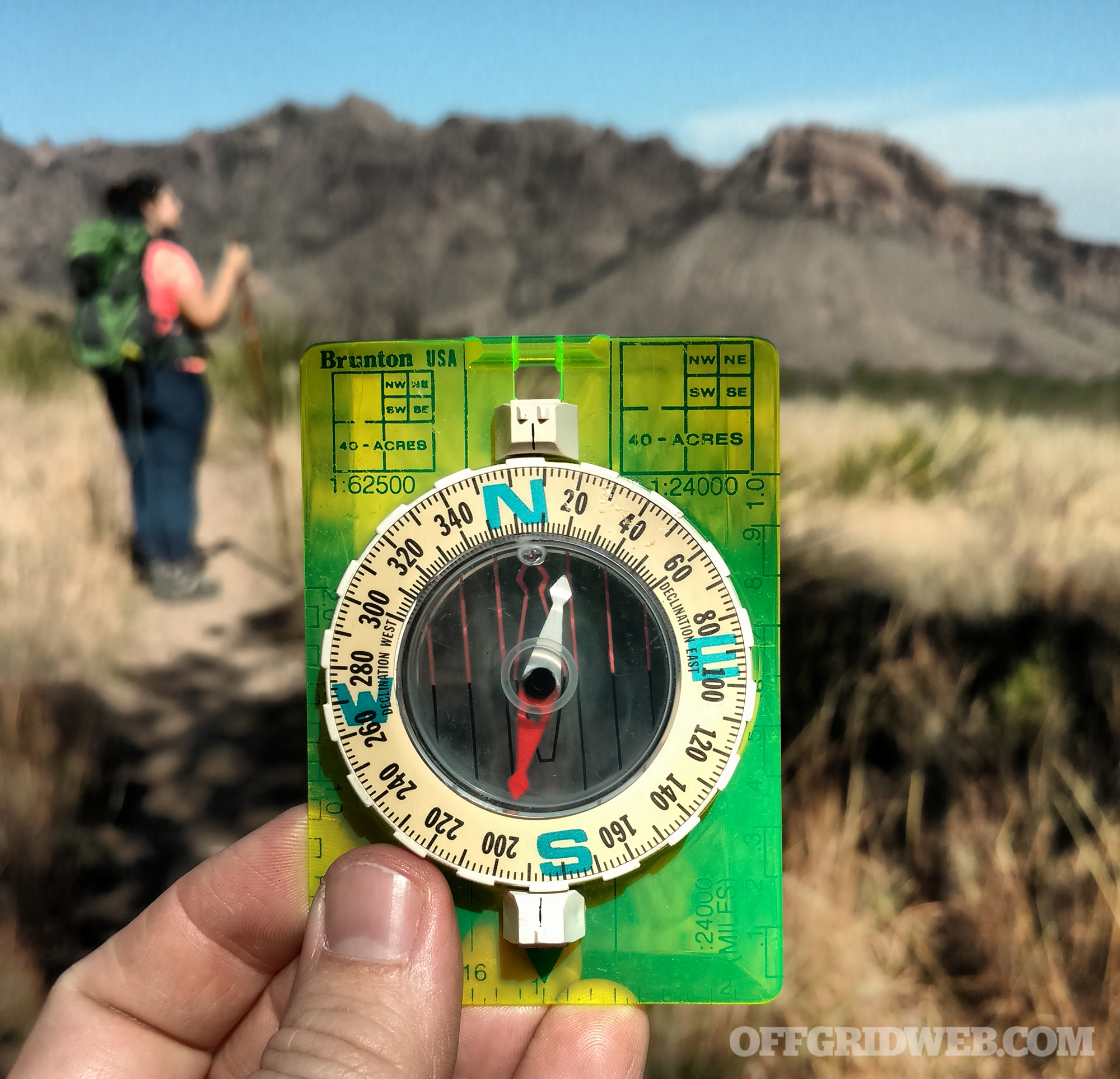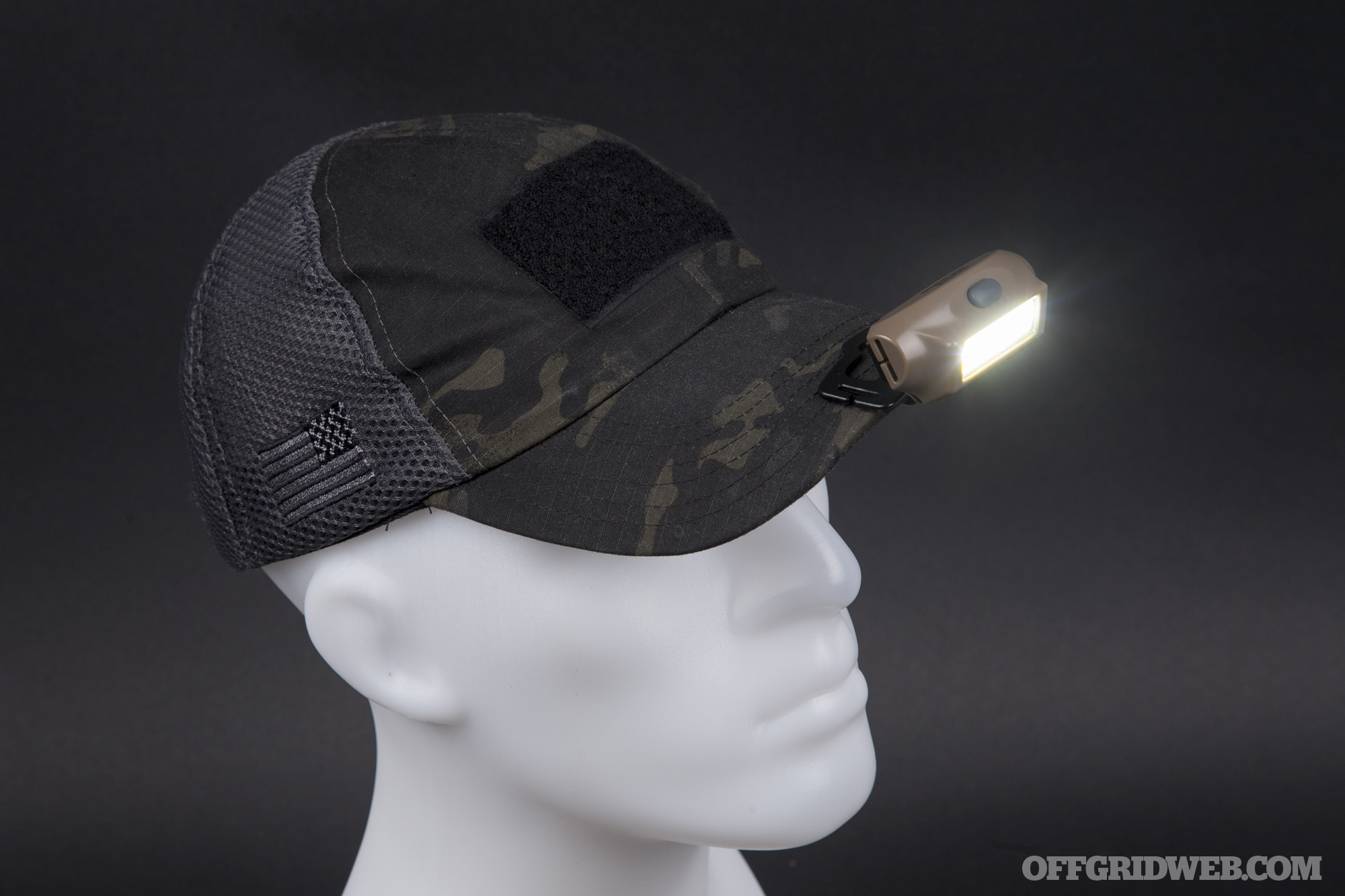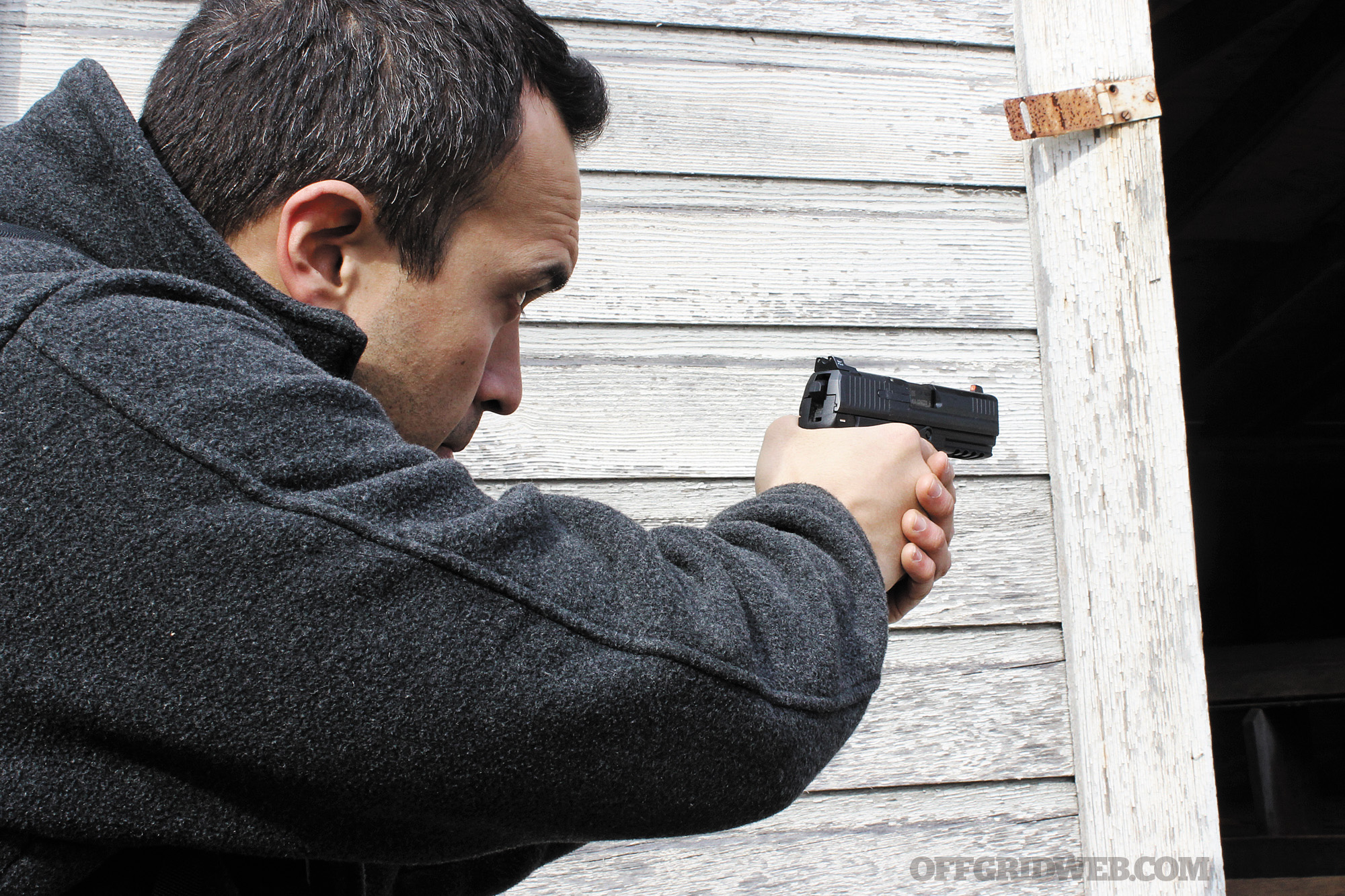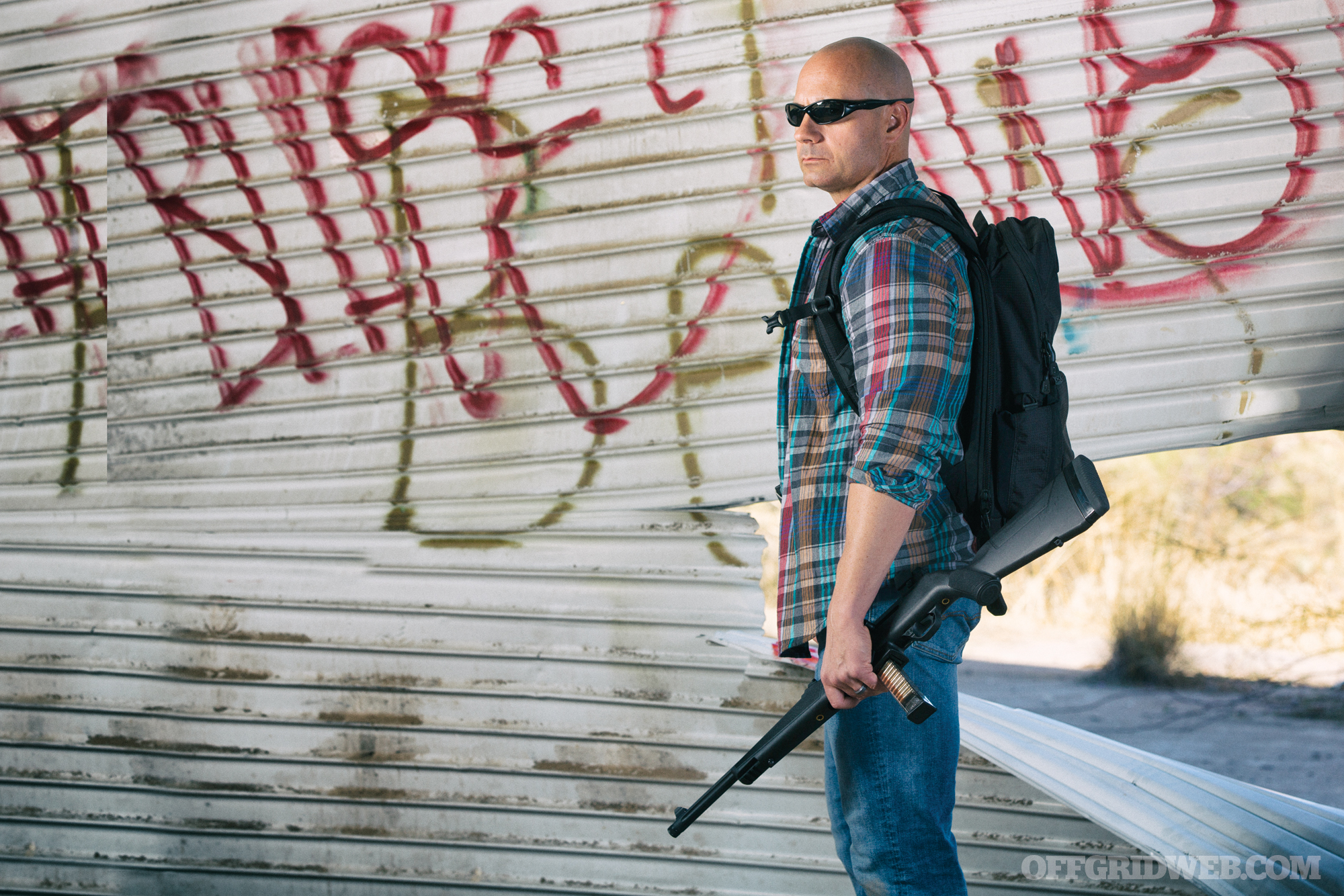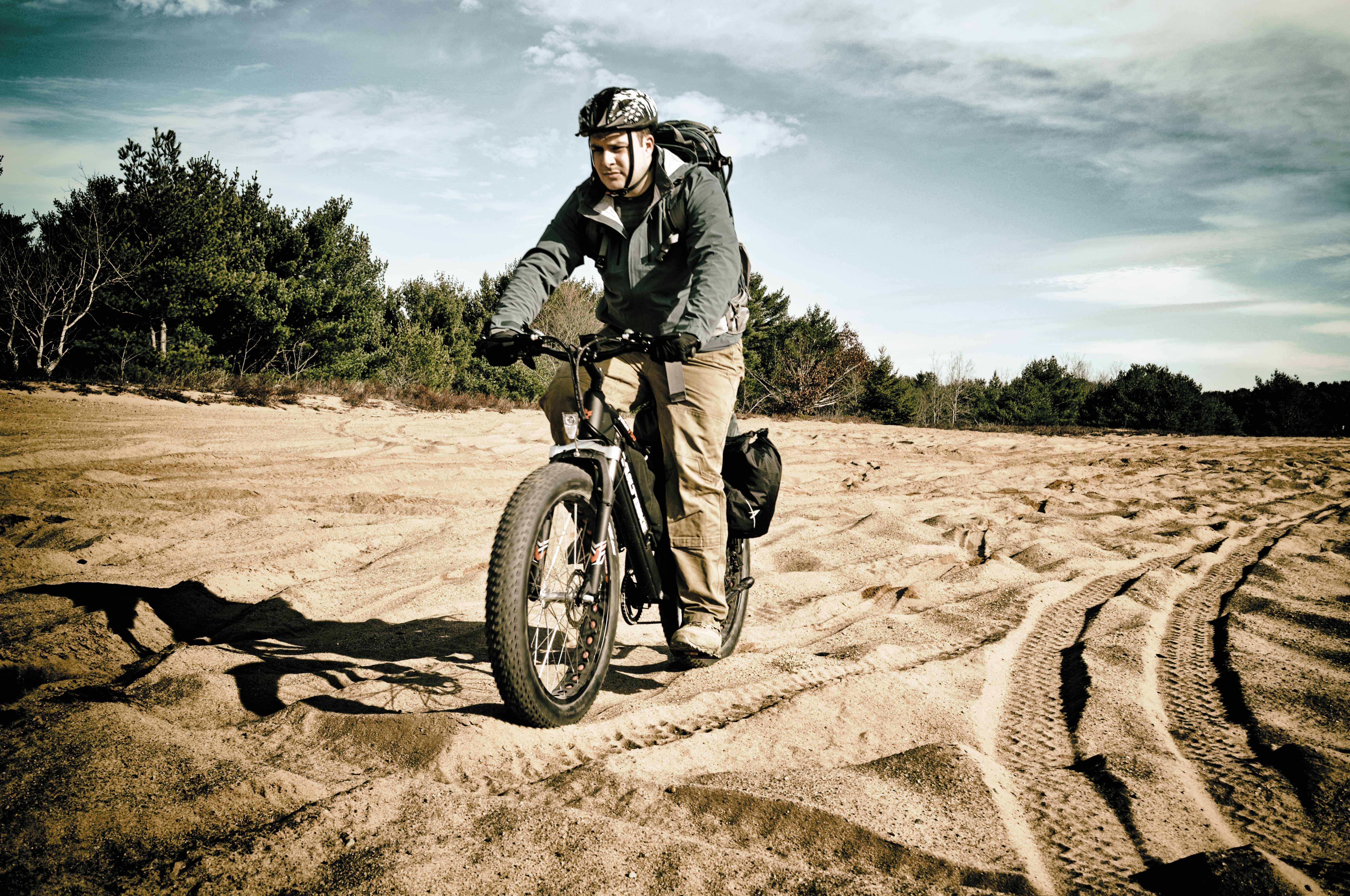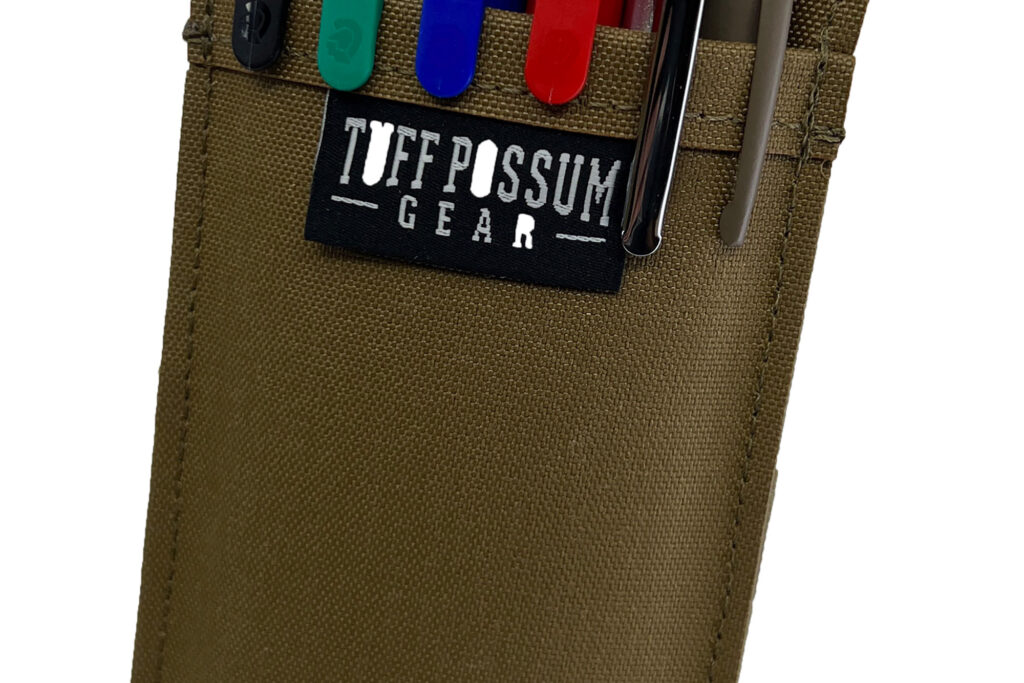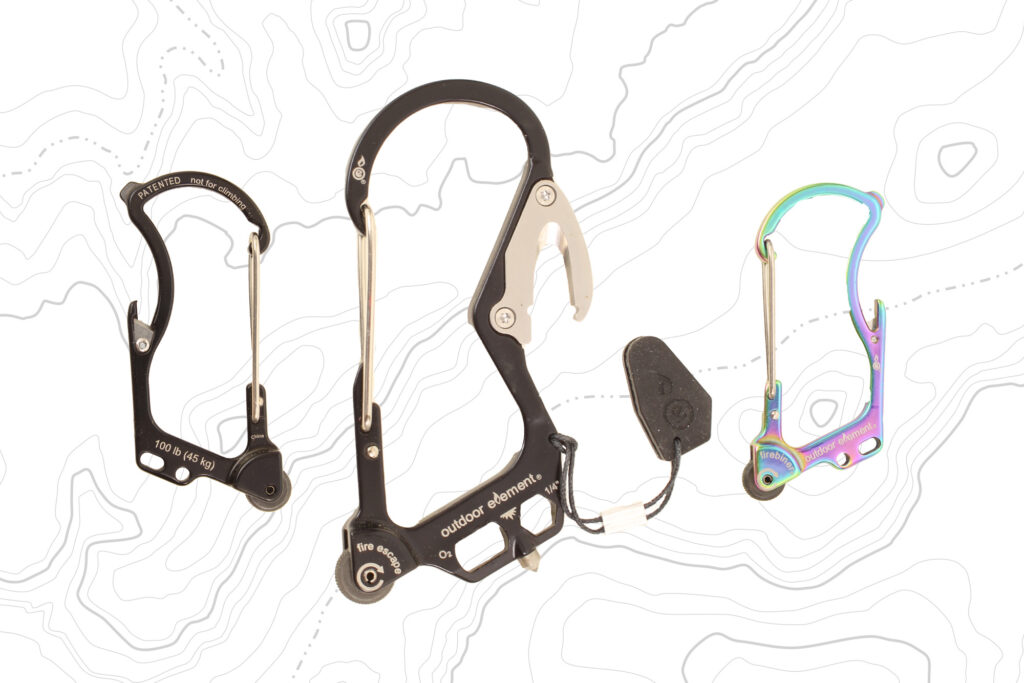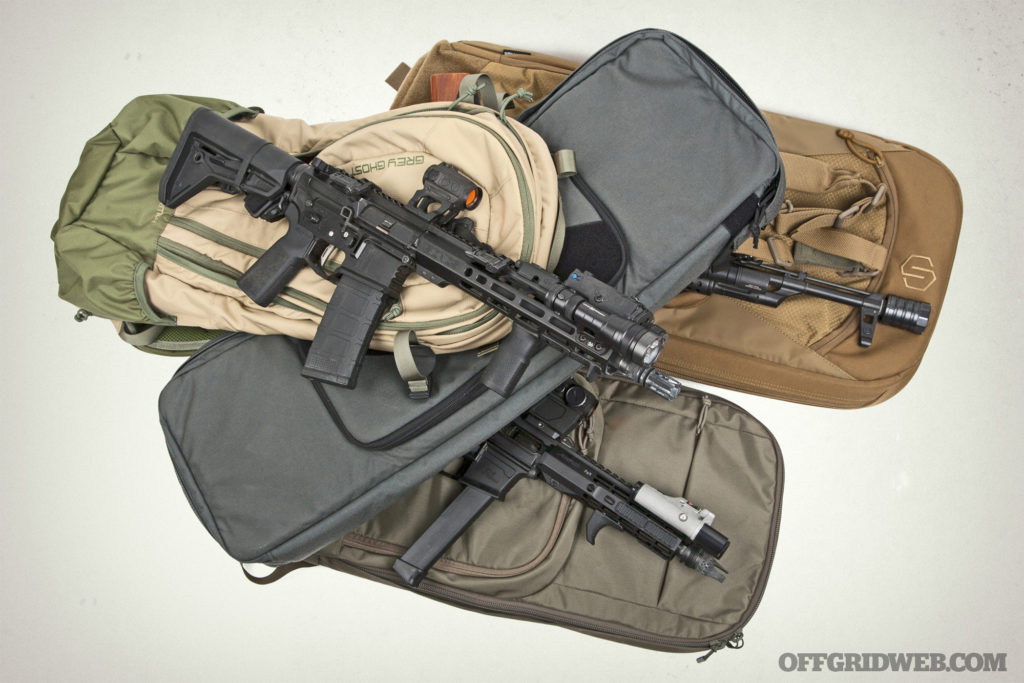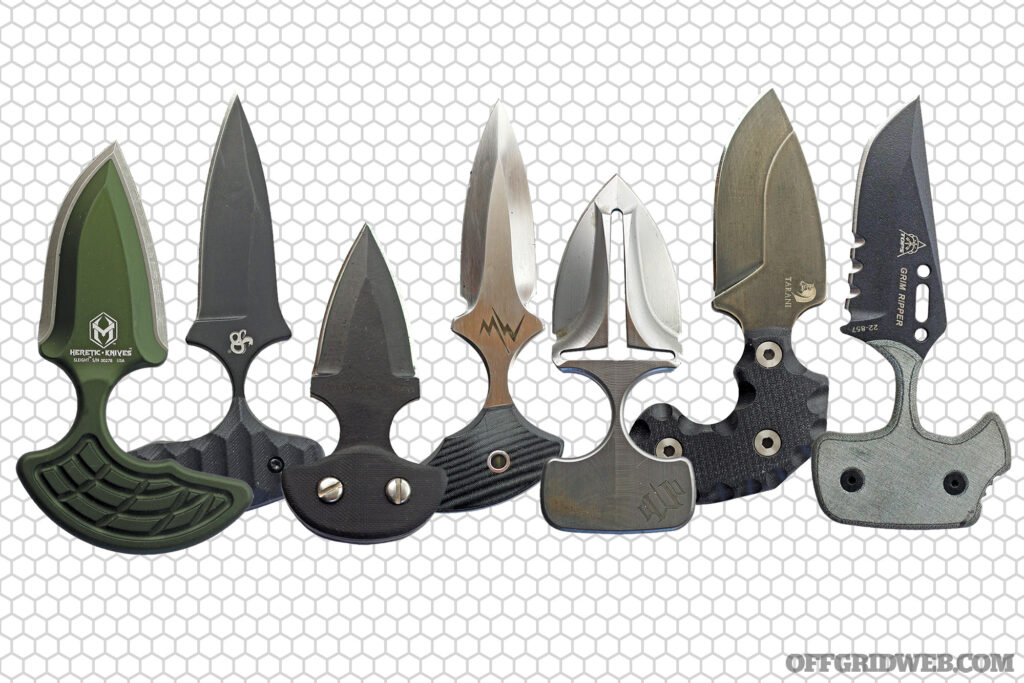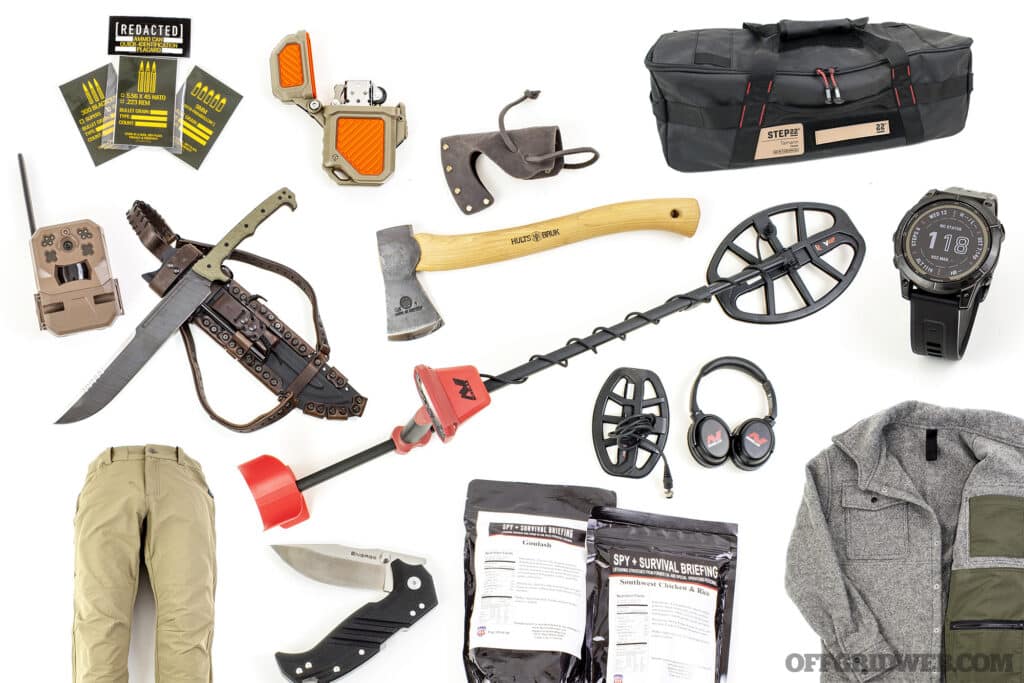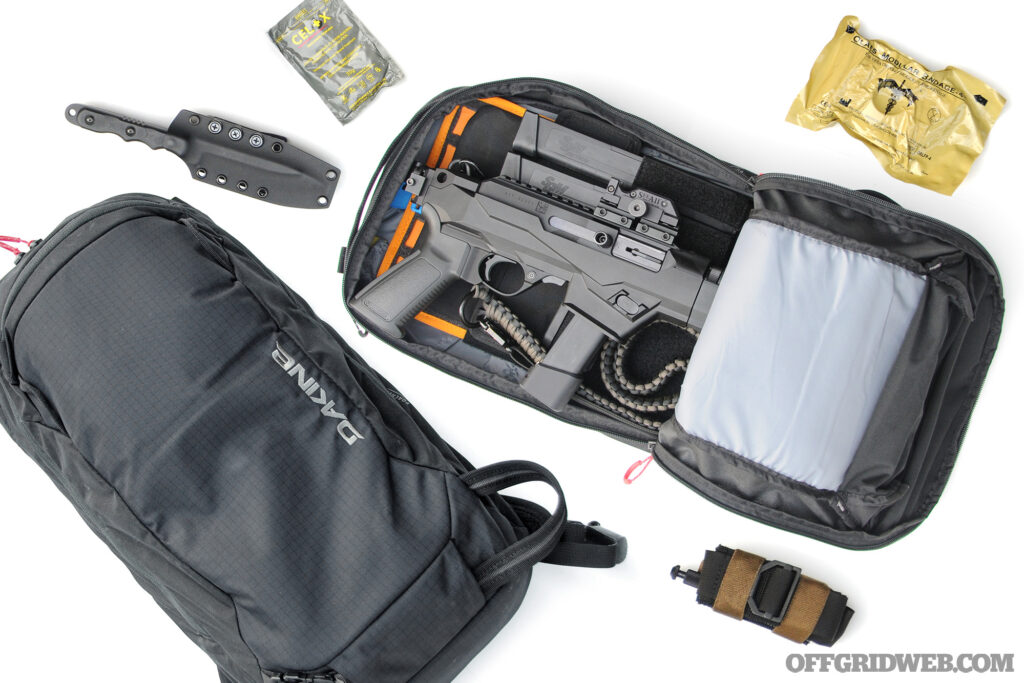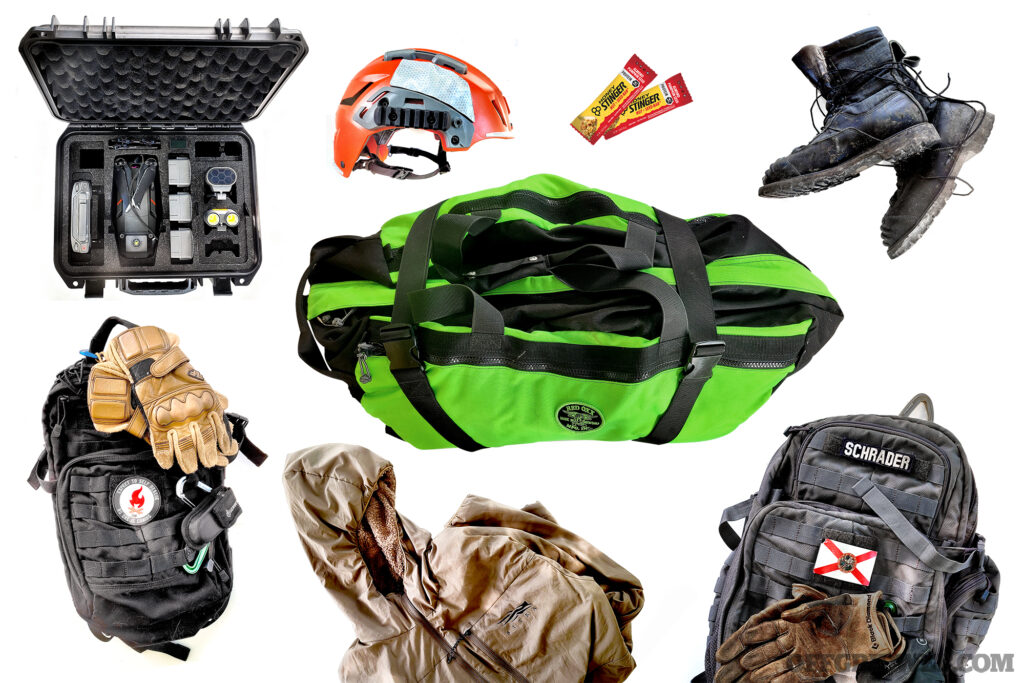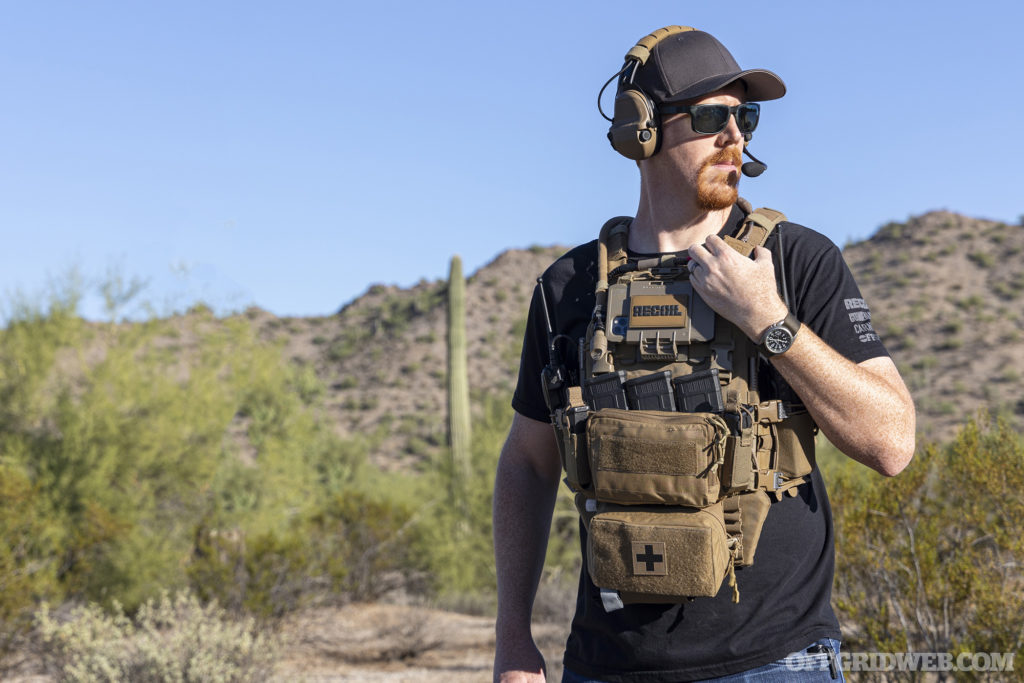Spend enough time wandering the web looking up topics regarding disaster or emergency preparedness, and eventually you’ll run into terms like “bug out,” “bugging out,” or “bug out bag.” To the uninitiated, the concept of bugging out, or building a bug out bag might be a little overwhelming, since these terms can mean many different things to different people. Although some people perceive bugging out as only necessary for an end-of-the-world apocalyptic situation, this is absolutely not the case — a well-stocked bug out bag is a practical tool that can help you and your family through a variety of real situations. So, we’ve created a bug out bag list of the most essential gear you’ll need for a wide range of emergencies.
But before we dive into some of the nuances, let’s explore what is meant by bugging out.
What Does Bug Out Mean?
Imagine a devastating natural disaster is on its way to your home, and evacuation orders have been issued. Or perhaps your city is being rocked by waves of civil unrest, and you fear for your safety. Either way, it seems like the security of four walls and a roof is not going to last. In the chaotic times we live in, it probably doesn’t take much of an imagination to picture this happening to you and your family or loved ones. For many in this situation, leaving as quickly as possible, or bugging out, is the best solution to avoid impending catastrophe.
There are countless situations in which evacuating to a safer location may be necessary. Here are some examples of situations where bug out plans might be viable, ranging from ordinary to extreme. To delve deeper into preparedness measures for any one of those topics, you can click one of the links.
- Hurricanes
- Wildfires
- Tornadoes
- Floods
- Long-term power outages
- Escape from domestic violence, stalking, or extreme harassment
- Self-rescue after being stranded in a remote location (e.g. a vehicle breakdown)
- Impending lockdown or indefinite “stay at home” order
- Civil unrest and rioting
- Government instability or economic collapse
- Mass-casualty event such as a terrorist attack
- War
Bug out is simply the informal term used by people who develop an evacuation plan for when things get dicey, and safety is no longer guaranteed.
Some examples of bug out plans you can see in your everyday life can be found in fire evacuation routes posted on the back of apartment or hotel doors, or the tsunami evacuation signs along roads leading to higher elevations. For most commercial and government organizations, having a plan to bug out is mandatory, and there are many free guides to help decision makers put one together.
Planning for disaster is not restricted to businesses and emergency responders, but the Federal Emergency Management Agency (FEMA) strongly recommends everyone be prepared as well. And one of the most important preparations you can make if you must bug out, is having a bug out bag list including all the essentials you’ll need to weather a deteriorating situation on the move.
Bug Out vs. Bug In
Above: Don’t be overly eager to leave home in an emergency. Your home offers large stockpiles of food, water, medicine, and other resources you won’t be able to fit in a bug out bag. It also provides a defensible position, especially if you’ve taken steps to enhance your home security.
Granted, leaving the safety of your home is not always the best solution — in many cases, sheltering in place can be a safer and much more comfortable way to ride out an emergency. Some call this “bugging in.” In these cases, a well-stocked bug out bag will still include many of the tools and resources you’ll need to stay safe at home. And, should the situation worsen, your bag will already be packed so you can hit the road quickly.
For more information on deciding whether to bug out or stay put, check out our previous article: Should I Stay or Should I Go?
How to Choose a Bug Out Bag
Having an emergency preparedness kit, a.k.a. bug out bag, is one of the single most important things you can do to be ready for a multitude of situations.
Above: The Vertx Gamut series of packs is popular for every-day carry as well as emergency preparedness. The subdued exterior conceals a multitude of useful features.
The exact situation you’re preparing for depends heavily on geographic location and your needs. For example, a bug out bag for someone living in the south side of Chicago will be dramatically different from someone living in a remote cabin in the Rocky Mountains. But your bug out bag list does not have to be overwhelming, simply start with a list of considerations and needs. Make notes about each of the points below, and feel free to write about your own concerns that arise while you do so. Thinking about what your present situation will heavily influence what gear you decide to bring, or not, when putting your bug out bag list together.
Variables to Consider
- Location – Is your location urban, suburban, or rural? Will a dense population clog travel routes and present chaotic danger, or will a remote location necessitate a higher degree of long-distance mobility? Are there safe places to hunker down nearby, or will you be on the move for a long time?
- Weather & Environment – Is it hot, cold, wet, or dry? Does the weather have a tendency to turn on a dime? Do you live in a place with a predicable climate, or will there be transitioning seasons taking place? It may be necessary to build a seasonal expansion kit with extra gear for incidents during cold or rainy months.
- Bug Out Duration – This can be a bit tricky to forecast due to the chaotic nature of emergency situations. Bugging out from the path of a Category 5 hurricane, which could mean being away for months, is much different from getting way from civil unrest for a few days. It is also possible to prepare for both, but if you’re just starting out, try to prepare for what you think is the most likely situation. You’ll also find that there are some items that you can add to your bug out bag list that will cover a multitude of emergency situations.
- Travel Distance – The adage, “one pound on your feet is five pounds on your back” quickly proves true when you start carrying a ton of gear in a backpack. If part of your bug out plan includes taking a vehicle to your next location, consider yourself lucky. But if you need to sling your bug out bag over your shoulders and make your way on foot, you’re going to want to think carefully about how far you’ll be able to travel with the extra weight. You can probably get away with a much heavier bug out bag if you’re only going a short distance (think 5 miles or less). For longer distances, the lighter the pack, the less energy you’ll need to spend exerting yourself, and the more likely you’ll prevent an injury.
- Group Size – Going it alone is romanticized in movies, but it is not practical. Not only is there safety in numbers, but if everyone has a bug out bag, there are more supplies to draw from, and more of the weight can be distributed among the group. Are there children, elderly or pets bugging out with you? These factors will also influence what you decide to bring with, or how you decide to bug out.
>See also: Safety in Numbers: How to Form a Preparedness Group
- Access to Resupply Points – Will you be able to restock and replenish perishable items along the way, or will you have to make do with what you have the entire way? A resupply point doesn’t have to be a department store, gas station, or another friendly household, it could also be a predetermined cache that was set up in advance. In any case, predetermined supply points can reduce the number of items you need to include in your bug out bag list.
>See also: Buried Treasure: How to Build a Survival Cache - Secondary Threat Assessment – Life doesn’t occur in a vacuum, if there is a disaster, or emergency that warrants bugging out, then in all likelihood, you are not going to be the only person looking to escape the ordeal. It’s human nature to not think about danger until it presents an immediate threat, so in the process of bugging out, you may come across people who are desperately looking for supplies or a means to save their own existence. Someone who is looking to prevent their own demise is a potentially dangerous person, and it could save your life to prepare for this encounter. That could mean training in some form of self-defense, but it could also mean choosing a bug out route that reduces the amount you’re exposed to other people.Humans are not the only danger, bugging out from a natural disaster, like a wildfire, flood, or blizzard, presents an entirely different spectrum of dangers that mush be planned for. How would you bug out from an area being stricken with a contagious disease? There is also the possibility that you are someone you are bugging out with is not in the greatest of physical shape or may become injured along the way to your bug out location. Do you are someone you are bugging out with require medicine on a regular basis? Does that medicine require refrigeration? As you can see, after having only considered seven major points, bugging out is not as simple as packing a bag with granola bars and water bottles and sneaking to a clandestine camping site.
Bug Out Bag Size
Choosing the right bug out bag is a highly personal choice, and you’ll only find the perfect one by wearing it fully loaded under the circumstances you predict might happen. The bug out bag doesn’t even have to be a backpack necessarily. It could be a duffel bag, load bearing vest, chest rig, hip-pack, satchel, briefcase, or even a purse. Bags at the smaller end of the spectrum are often called day packs, 24-hour bags, or “get home bags,” and are designed to sustain you for shorter emergencies.
Above: Duffel bags and roller bags can be viable for some bug-out scenarios. They’re harder to carry on your body, but can easily be tossed into a vehicle.
Traditionally, most bug-out bags fall into a category referred to as 72-hour bags and are large enough to contain everything you need to be self-sufficient for three days. However, emergencies don’t magically end after 72 hours, so that should only be seen as a general rule of thumb. For this reason, we’re not going to recommend a specific size or carrying capacity — 30 to 50 liters is usually a good ballpark, but much smaller or larger packs may be necessary in certain situations.
Bug Out Bag Features
Some packs (such as modern hiking packs) have rigid internal support structures to help reduce the stress on your back, and packs with external frames (such as the classic military surplus ALICE pack) make it easy to lash other items or gear to the outside when needed. If you’re carrying a substantial amount of weight, a pack with an internal or external frame is highly recommended.
If you expect to be traveling long distances on foot with a heavy load, packs with shoulder load-lifting straps, lumbar support, and a padded hip belt will be crucial. Some packs will even adjust to the length of your spine. To wear a heavy pack properly, it is important to cinch the hip belt so the weight of the pack is resting on your hips before tightening the shoulder straps. Hips are load-bearing joints, and wearing a pack this way will prevent a lot of injuries. If you’re ignoring your hip belt, you’re going to get hurt.
Above: A large pack offers more room for supplies, but also slows your movement and can lead to injuries if you’re not physically fit. If you need to carry a lot of gear, look for a pack with comfortable shoulder straps, a sturdy frame, and a supportive hip belt. (U.S. Army photo by K. Kassens)
To recap, here’s what we’d recommend for a traditional bug-out bag:
- Durable materials, but not excessively heavy
- Large enough to carry all the gear you need, plus a little room to spare for supplies collected in the field
- Internal or external frame
- Padded shoulder straps with load lifters
- Adjustable chest strap
- Lumbar support pad
- Wide, comfortable hip belt
Bug Out Bag List: The Basics
Above: Commercial hiking packs such as this Osprey Kestrel 48 can be outstanding bug out bags, and may not draw as much attention as a “tactical” or military backpack in suburban areas.
Hopefully you spent some serious time contemplating the factors in the previous section and have started thinking about what you could bring with you. Packing a bug out bag doesn’t have to be terribly extensive. At a minimum, it just has to have enough gear and goods to keep you alive from one point to another. At most, the gear you bring with could help you establish yourself for a longer period at your bug out location.
There is a popular method of thinking about the most fundamental survival gear called the “5-C’s of Survival.” This includes:
- Cutting tools
- Combustion materials (for starting fires)
- Cordage
- Containers (for carrying water)
- Cover (protection from the elements)
These are items which will provide for your basic necessities and buy you enough time to get (or make) the other resources you need in a survival situation. It’s not the end-all be-all to thinking about what to bring, but it’s a pretty good place to start your bug out bag list.
Above: Your cutting tools may include a fixed blade camp knife, a folding pocket knife, or both. This photo shows a B.O.B. Fieldcraft fixed blade and MSF 4.0 folder, both from TOPS Knives.
Cutting Tools – As the term implies, cutting tools are things like knives, axes, and saws. It is easiest to bring an inexpensive stainless-steel fixed blade knife, such as the ever-popular Mora, but a folding pocket knife is better than nothing. In a worst-case scenario, you can improvise cutting tools with things like broken glass or by knapping flint. But using these skills is time consuming, and the midst of an emergency is not the time for slowly crafting a sharp (and fragile) edge. Examples:
- Fixed blade survival knife, machete, parang, kukri, or similar
- Folding knife
- Multi-tool
- Ax or hatchet
- Saw
Above: You should always have multiple methods of starting a fire. A Prometheus Design Werx ferro rod, struck against the spine of a knife, threw enough sparks to quickly ignite this tinder.
Combustion Materials – For bug out bag purposes, a combustion tool should be quick and reliable. Many tout the great effectiveness of a simple Bic lighter, but if it’s too cold, the fuel won’t vaporize, and if you’re wearing gloves, you may not be able to manipulate the striker. Fuel can also leak out if the button is inadvertently pressed inside your pack. Other items to consider are weatherproof matches, commercially made tinder with a longer burn time, candles, and of course ferro rods. Learning to identify, collect and process combustible materials is also just as important as bringing along an item that will set them alight. Ultra-light backpackers also bring collapsible camp stoves and fuel that are more portable and convenient than a small wood fire. Examples:
- Lighter
- Ferrocerium rod
- Matches
- Magnesium bar
- Tinder
- Tinder-making equipment such as a char cloth container
- Portable stove or backpacking stove with fuel
Above: Paracord can be used for a wide variety of tasks, from lashing together branches for a shelter to creating a ridgeline for a tarp. The venerable Swiss Army Knife is always a good addition to your pack as well.
Cordage – If you are unable to walk outside and identify a material that you could make a rope with, you should probably bring your own. Technical rope, like the kind climbers use to traverse vertical rock faces, can be used in a similar manner to haul heavy things or raise and lower people or supplies where ladders are unavailable. There’s also everyone’s favorite, 550 paracord. This was originally used to rig parachutes but became popular among military and survival circles because the length of cord is actually a nylon tube filled with smaller strands of nylon cords that can be used for anything you can think of. Some companies went further, as in the case of Survivor Cord, by stuffing the cord with things like fire cord, snare wire, and fishing line. Other things that fall under the same category as cordage include duct tape, zip ties, carabiners, or anything that you can use to tie something down or secure something to something else. Examples:
- 550 paracord
- Specialty cord such as FireCord or TITAN SurvivorCord
- Climbing rope and carabiners
- Jute twine (doubles as tinder)
- Duct tape
- Zip ties
- Snare wire
- Fishing line
Containers – Cupping your hands will only go so far. Apart from the bug out bag itself, having a water-tight way to carry and transport liquids, especially water, is a must. Nalgene is a flexible polymer that makes for a lightweight water bottle that’s perfect for freezing temperatures, but it can’t hold up to direct heat for boiling water. A non-insulated metal canteen can be used to boil water for sanitary reasons, but a canteen with a narrow opening makes it difficult to mix and eat some types of backpacking food. A happy medium is the combination of a plastic bottle for liquids, and a metal canteen cup to heat water and food over a fire. Wide-mouth metal bottles such as Klean Kanteen are also popular.
Above: A water container is certainly one of the bug out bag essentials. If you choose a metal container, you’ll also be able to boil water inside, and some bottles even have built in water filters. This GRAYL Ultrapress Titanium features all three features rolled into one useful container.
The most important container is a vessel for water, but other types of containers that are useful are plastic bags of various sizes, Altoid tins, or small Pelican cases. There are also a ton of useful zippered pouches and pockets from various gear suppliers to fit any bug out bag, so it really boils down to what and where you need to store it. Don’t forget to fill your containers with clean water ahead of time, and to include a survival water filter or other tools to purify water you collect in the field. Examples:
- Nalgene bottle
- Metal camp cup
- Metal canteen or bottle
- Camelbak or other hydration bladder
- Cookware such as a pot or frying pan
- Plastic bags
- Waterproof Pelican cases for fragile items
- Zippered pouches or roll-up dry bags for gear
Cover – Humans were made to thermoregulate body temperature to a constant 98.7 degrees F, but only if we are living in a climate that doesn’t veer too far from that temperature to begin with. If it the ambient temperature gets too hot, or too cold, that could spell trouble in the form of hyperthermia (heat stroke) or hypothermia, and there are not too many locations on the planet that accommodate the goldilocks zone we need to survive naturally. So, we need things like appropriate clothing, such as rain or cold weather gear, and shelters to stave off night-time lows and day-time highs. It’s not always easy to pack these types of things in a bug out bag due to their bulk and weight, but there are light-weight emergency thermal blankets and rain ponchos that will work in a pinch.
Above: A lightweight tent, air pad, and sleeping bag will allow you to get a much-needed rest away from wind, rain, and insects. This photo shows a Sierra Designs Studio 2 tent (without rain fly installed) and Synthesis sleeping bag.
Depending on the season, it might be a good idea to bring a change of socks, or a pair of sunglasses. And if you need to stay at a clandestine camping site for a few days, using backpacker’s hammock with an ultralight sleeping bag could be a good way to rack out while staying off the ground and away from critters and pooling water. In cold climates, you’ll need to think about insulating yourself against the ground. Most sleeping mats for camping have a R-rating, just like the insulation in your home. The higher the R-rating, the colder the ground you can sleep on comfortably. For minimalist warm-weather cover, consider a lightweight tarp strung up on a ridgeline, plus a sleeping bag and protective bivy bag. Examples:
- Tent or hammock
- Waterproof tarp
- Sleeping bag and/or waterproof bivy bag
- Sleeping mat or pad
- Mylar emergency blanket
- Seasonally-appropriate clothes
- Rain gear
- Extra socks and underwear
- Comfortable boots or trail shoes
- Sunglasses
- Wide-brim hat
Refining Your Bug Out Bag Loadout
So, you’ve got an emergency preparedness kit that covers the 5 C’s and is loaded in a properly fitted and tested bug out bag. That’s a great start! It will even cover a lot of basic needs in many disaster or survival scenarios, but it is also just the tip of the iceberg. The more the bug out bag is tweaked and refined, the more you might realize it’s missing something important. We’ll address these below.
Water & Purification Gear – This is something we all need to live, and it is especially important when exerting yourself, like in a bug out scenario. In a survival situation, eating is discouraged if there is not enough water available to aid in the body’s digestive processes. If you’re following the 5 C’s we mentioned, you should have at least one bottle of clean water in your pack, but that’s usually not enough.
Above: Even if a lake or river looks clean where you are, it may be loaded with harmful bacteria, viruses, or other waterborne contaminants you can’t see with the naked eye. It’s always wise to filter, purify, or boil water you’ve collected before drinking it in order to avoid illness.
A rule of thumb is to carry 1 liter of water for every two hours of traveling on foot. On average, a human can travel one mile, on foot, in 30 minutes. However, this can change dramatically if there is steep elevation, thick vegetation, hot weather, or any number of challenging obstacles that may present themselves. In its most simplistic form, if your bug out location was 4 miles away, at 30 minutes per mile, it would take you two hours to get there. In other words, you would need 1 liter per 4 miles per person under perfect conditions, more if conditions are less than perfect.More distance means more water. Unless you plan a long bug out route that passes sources of clean water, or water that can be treated with filters or bleach, be ready load up with as much water as is necessary. Just remember that water is also heavy — each liter will add 2.2 pounds to your bug out bag.
Above: Bug out food doesn’t have to be miserable and tasteless. With the addition of some boiling water, freeze-dried backpacking meals can provide a warm, nutritious morale boost. This Mountain House Chili Mac with Beef is one of our favorites.
Food & Cooking Supplies – These should be lightweight, energy-dense foods (i.e., trail mix, jerky, backpacking meals) that can be prepared quickly or eaten on the go. There is lightweight trail cookware that would make food prep easier, but choosing to bring these depends on the expected duration of the bug out. If bugging out is expected to last only a few hours to a few days, then maybe a few heatless snacks or MRE’s would do the trick. But if you’re facing a longer duration event or may need to hunt and cook meat, a lightweight cooking set with utensils may not be a bad idea. Packing hydration mixes or electrolyte tabs could also be a potential life saver, especially in hot weather. Morale boosters like instant coffee, tea, cooking spices or candy can also be a great pick-me-up during a bug out scenario. Examples:
- Energy-dense trail food (nuts, trail mix, jerky, energy chews, etc.)
- Dehydrated food and freeze-dried backpacking meals
- Military MREs
- Shelf-stable foods (rice, beans, pemmican, etc.)
- Cooking resources (oil, seasonings, etc.)
- Morale-boosters (coffee, tea bags, chocolate, hot sauce, etc.)
- Utensils for cooking and eating
Above: An off-the-shelf first aid kit like this Adventure Medical Kits Adventure First Aid 2.0 kit can help with many common illnesses and injuries. A separate trauma kit, also called an individual first aid kit (IFAK) in military parlance, may be necessary for life-threatening injuries such as severely broken bones, puncture wounds, or gunshot wounds.
Medical & First Aid – Having a few bandages, gauze, and sterile wipes will help prevent infections. And a handful of over-the-counter medicines like Tylenol, allergy pills, and antacids should cover the most common of ailments. Depending on where you live and your clothing choices, it may be a good idea to think about sunscreen. Taking care of your feet is also crucial when you are traveling long distances on them, so having some moleskin or using duct tape to cover hotspots will help prevent blisters. Biting insects or poisonous plants may be worth preparing for with bug spray, anti-itch/rash cream, or even a mesh mosquito hood. When it comes to more serious medical supplies like tourniquets, suture kits, or anything trauma related, pack what you know how to use safely and proficiently. Examples:
- Survival medicine and medications (painkillers, anti-diarrheal, antihistamines, etc.)
- Adhesive bandages
- Gauze, tape, and self-adherent compression wrap
- Moleskine for blisters
- Sunscreen
- Insect repellent, sting/bite ointment
- Trauma kit or IFAK with tourniquet(s), hemostatic gauze, pressure dressing, and chest seals
Personal Hygiene – Nobody enjoys feeling dirty for too long, and wet wipes or a washcloth can be used for a refreshing wipe down. Dental hygiene is often ignored in a survival situation (watch the movie Cast Away to find out how this turns out), so it may be a good idea to bring floss or a toothbrush. Hand sanitizer or soap can help prevent many diseases, and deodorant or body/foot powder can help you stay dry and prevent skin problems like dermatitis. Bugging out females need to consider feminine hygiene. There are products on the market that are rinsible and reusable, and many women who go ultralight camping simply dedicate a water bottle for use as a bidet. A water bottle bidet is also a great alternative to carrying a ton of wet-wipes or toilet paper. Examples:
- Wet wipes
- Hand sanitizer and/or camp soap
- Bandana, shemagh, or squeezable chamois towel
- Toothbrush and toothpaste
- Deodorant
- Baby powder for friction reduction and dry showers
- Feminine hygiene items
- Trash bags
Above: A multi-tool such as this Leatherman Rebar provides many useful tools in one convenient package. If you’re not already carrying one in your pocket, you should certainly have one included in your bug out bag list.
Tools – A small bolt cutter, lock pick set, or any other form of entry tool could come in very useful, especially if you have a desperate need to get out of the elements. Obviously, you should use these items responsibly and expect to justify their use to authorities after the fact. Many people carry a multi-tool for their compact versatility, but having a small, dedicated tool kit like Fix It Sticks can aid in repairs or assembly/disassembly of your other bug out bag essentials. Examples:
- Multi-tool (e.g. Leatherman or Gerber)
- Compact tool kit (e.g. Fix It Sticks)
- Silcock key for sourcing water in urban areas
- Lockpicking tools for emergency entry/escape (use them responsibly!)
- Cash and other desirable items (e.g. cigarettes, coffee, alcohol, or possibly even weed) that can be used for bartering
Navigation – A fully charged personal GPS unit will make life easy when navigating to your bug out location. A compass and map of your bug out plan should almost be a necessity, but only if you know how to use them. Pencil and paper can be handy to take notes or jot down a sketch for communication, or for recording your travel route. Bringing a pair of binos or a monocular could be useful for identifying potential hazards or threatening situations before you find yourself in the midst of them. Examples:
- Compass and map (plus knowledge of land navigation skills)
- Portable GPS unit
- Binoculars or monocular
- Notepad and pen
Above: A headlamp provides hands-free light for tasks after sunset. This Streamlight Bandit Pro headlamp is lightweight, USB-rechargeable, and can be worn on a headband or clipped onto the brim of a hat.
Personal Electronics – This could include a headlamp or flashlight for illumination, two-way radio for communication, cell phone or burner phone, and any of the necessary charging cables/power adapters. Keep in mind though, unless it has a solar panel or a hand crank, eventually the charge will run out (and it will run out very fast if it’s cold). There are disposable batteries and USB power banks, but these are also extra weight and have a limited supply of energy. Depending on the environment and how much you’re moving, a small solar panel may be helpful for keeping essential devices powered. Examples:
- Flashlight, survival headlamp, and/or lantern
- Handheld radio such as a Baofeng
- Cell phone (or burner phone)
- USB battery pack
- Portable solar panel
- Charging cables
- Power adapters for vehicles (12V) and wall outlets
- Spare batteries
Above: As much as we’d like to trust everyone we meet and work together during emergencies, there will always be dangerous individuals who are willing to victimize others to get what they need (or want). It’s advisable to factor some form of self-defense tool into your bug out bag list, if you’re not already carrying a concealed weapon on a daily basis.
Self Defense – Even if you’re a professional ninja whose hands are considered lethal weapons, having an extra form of self-defense will help keep you and your loved ones safe during a bug out scenario. When circumstances are dire, it’s an unfortunate fact that there are some individuals who may be willing to attempt taking your gear by force. A self-defense tool and the appropriate training can prevent this and may also be able to be used for hunting or protection from wildlife.There are many possible configurations you could use to carry a handgun or longer rifle/shotgun in your bug out set up. Unless a vehicle is part of your bug out plan, a gun and its ammo should be light enough to comfortably carry a spare magazine or two. If firearms are not possible, a defensive knife or OC spray are great, short-range alternatives, and even trekking poles or a walking stick can be used in self-defense. Examples:
- Pistol, holster, and belt
- Rifle/shotgun and sling
- Spare magazines, ammunition, and pouches/bandoliers/chest rig
- Defensive knife and sheath
- Pepper spray
- Trekking poles or walking stick (can be used as an impact weapon)
Testing, Training, and Mental Preparedness
There’s a lot more to preparing for an emergency than simply buying gear and storing it in a closet. The late survival expert Mors Kochanski famously said, “The more you know, the less you carry.” Training doesn’t have to be from an expert in the field (although that does help immensely), simply spending time with your gear will help.
Put your bug out bag essentials together and wear it around the house while you’re doing chores. Go for a walk or hike a local trail. Take it on a camping trip and rely solely on its contents. Take notes about what you used, what you didn’t, and how easily accessible each item was. Frivolous things can be removed, important things can be added, and after a few short hikes, you’ll feel more confident that what you packed in your bug out bag.
Every emergency is different, and there’s no universal solution for what to bring or how to bring it. Not every item mentioned in the lists above are mandatory, and there are items you may require that have been left out. Don’t forget, the real Best Bug Out Bag Checklist isn’t one you find online. It’s the custom one you make for yourself based on a careful analysis of your exact survival needs and risks. We hope this article helps you create a bug out gear list that can help you and your family make it through a real-life emergency someday.
More Bug Out Bag Articles from OFFGRID
- Bag Drop: The Wildfire Bug Out Bag
- 10 Bug Out Bag Tips for Long Treks
- How to Pack Your Bug Out Bag
- Survival vs. Bug Out Scenarios
Related Posts
The post Bug Out Bag List of Essentials appeared first on RECOIL OFFGRID.




